Rural Studio is proud to stand with our neighbors and work alongside our partners. As we continue making positive change in our own rural community, we have expanded our impact beyond Hale County, supporting community and housing organizations throughout the Southeast.
This year, we are also honored to celebrate several national awards and stand alongside fellow winners of the Cooper Hewitt National Design Award. Rural Studio is fortunate to be among great company!

BORN IN NEWBERN DESIGNED IN BHAM PRINTED IN MONTGOMERY ALL OF RURAL STUDIO’S NEWS FROM HALE COUNTY VOL. 11 2021–2022 FREE TAKE ONE ®
INVESTING IN THE FUTURE

To our dear friends near and far,
As in all times, we are wrestling with thorny issues across the globe and at home—geopolitics, health, climate, equity, rights. Yet even so, we have cause to celebrate our continued work addressing the needs of our rural communities. And we need to celebrate. Our work offers rewards in and of itself, but I’m delighted to share good news, news that bolsters our spirits and keeps us moving forward.
We are incredibly humbled to share that this year we’ve been honored with a prestigious Cooper Hewitt, Smithsonian Design Museum National Design Award in Architecture / Interior Design. The award was established in 2000 by the White House to recognize excellence and innovation across all design disciplines. In many respects, we’re struggling with imposter syndrome. How can a small undergrad architecture program in West Alabama be in such design company? This award inspires us by acknowledging the quality of the design work over the decades and reinforces the message that good design is for everyone, including disenfranchised rural folks living in extraction landscapes.
We stand in the lauded company of Pritzker Prize winners and AIA Gold Medalists like Thom Mayne and Tom Phifer, as well as our friends Brooks + Scarpa, Mack Scogin, Tom Kundig, Marlon Blackwell, and of course, Tod Williams and Billie Tsien! On top of that, we have come full circle: our own Samuel Mockbee was a nominated finalist in the very first awards in 2000. Perhaps he is smiling down at us with pride in what he created. It takes a village: all of us—students, faculty, staff, and of course, our beloved neighbors in Hale County.
or do we really want to try to do something about this regional housing crisis? In the spirit of Rural Studio, we needed to be brave and take the risk. Better to fail than not try at all. Today, the work is really taking off. Our Hale County designs are now being deployed across the Southeast, thanks to Rusty’s leadership and our sharp, selfless team of Mackenzie Stagg and Betsy Farrell Garcia!
Rusty’s passionate, tireless work has transformed his role as Associate Director from being our facilitator and main campus liaison into being a national voice on the systemic challenges of rural housing. He has truly jumped in with both feet and started to highlight the many complex and interconnected issues of housing access and affordability. In the process, we all have come to understand that the design of the house is the easy part of a really, really complex problem. Rural Studio Farm is also now firmly embedded in our culture. We had the physical infrastructure prior to 2015, but Eric Ball’s visionary transformation to row cropping, high production, and sustainability has been key to the Farm’s success. Eric, with his background in biology and teaching, has been essential. His curiosity and fortitude catalyzed initiatives like a new partnership with Sarah Cole of Abadir’s, who founded the Black Belt Food Project, as well as the creation of a new internal Rural Studio CSA, which illustrates our confidence in the Farm’s consistent production capacity. Furthermore, Eric is a natural teacher who loves this work. I appreciate the way that he describes why I have to dig a hole and not just where. He provides context for all of the tasks that we do at the Farm, and he manages with deep knowledge and meticulous care. How lucky we are to have Eric at the Studio!
Another initiative is being spearheaded by Emily McGlohn. Emily, as part of the Consortium for Alabama Rural Water and Wastewater Management, is working on solutions to the tricky problem of raw sewage, which spills out daily in the Black Belt. Economic hardship, soil conditions, and the spread of homes across the landscape all put centralized systems and conventional septic systems out of reach for many in this region.
All of these initiatives focus on sustainability in one way or another, combined with a commitment to community.
It takes a village, a team. But it also takes extraordinary, dedicated individuals for whom it becomes a way of life. They go above and beyond the call of duty to make these initiatives happen. That’s the spirit of Rural Studio. I hope you’ll take the time to read more about this honorable work here in our newsletter.
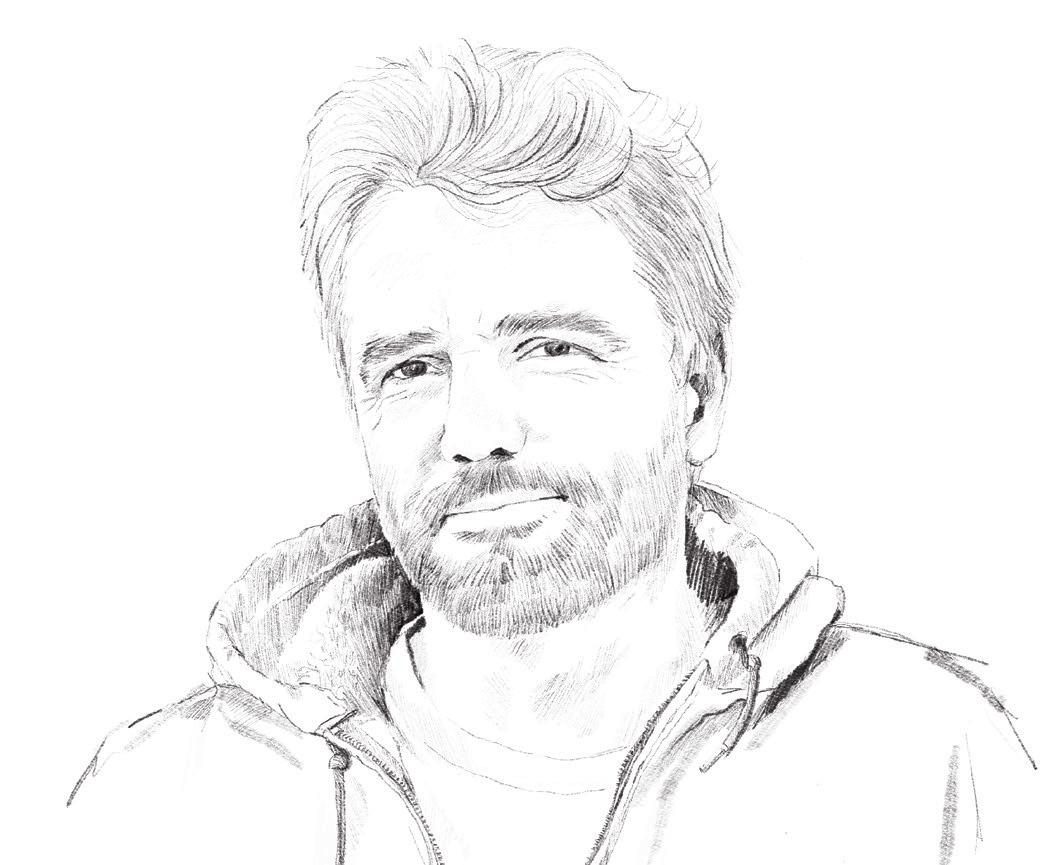
Pig Roast, our annual celebration of the Rural Studio community, was a stunning success. We rebounded from our pandemic restrictions and enjoyed two days of outstanding company and festivities. Before the last evening closed, we said a few soulful farewells, reflecting on the passing of four dear friends of Rural Studio. They were not able to join us in body, but we celebrated their lives. Three were Newbern institutions—Bill Walthall, Anne Honeycutt, and GB Woods—and another was great supporter and writer Andrea Oppenheimer Dean. We will miss them all. Each loved Newbern, Rural Studio, and particularly Pig Roast. We raise our glasses in their honor.
We further toast Andrea Oppenheimer Dean, not just for bringing our little corner to the world through three books with Timothy Hursley, but for her friendship and kindness. A graduate of Barnard College, she established herself as an eminent architectural critic, writer, and editor, shining a focused light on the best of her time, all while being her quiet, modest self. Only at this year’s Pig Roast did we share that she had been a significant contributor to Rural Studio for 20 years. She humbly dodged the limelight, not wanting anyone to know of her generosity. I hope she’ll forgive me for sharing now!
We keep transforming. Our old friend Kiel Moe is now Professor of Practice at Auburn. With him, we are planning a new mass timber bath house for our Morrisette Campus as a 5th-year project. With a partner in Nashville, TN, and for our other 5th-year project, we’re developing a small, adaptable, multistory house for use in both urban and rural settings called the 18x18 House. The dimensions and name—18’ x 18’—come from the size of two parking spaces.
Chelsea Elcott left the position of 3rd-Year Instructor for a position at JAM in New York City, and Judith Seaman has stepped into that role. Thanks to a USDA Placemaking Grant, we hired an old friend, alumnus, and colleague—John Marusich—for site management of design-build projects. We’re also working on growing the Front Porch team. And Heather Phillips—Brenda Wilkerson’s niece, co-conspirator, and executive lunch buddy—has left her role in the front office to pursue a new opportunity at the University of Alabama; Dudley Long, a Uniontown native and West Alabama activist, is now taking on the position.
The project work of our students has been extraordinary over the last few years, particularly with the challenges of the pandemic. I’m equally proud of the progress made by Studio initiatives that extend beyond our classroom: Front Porch Initiative, Rural Studio Farm, and our emerging wastewater pilot program. When we started the 20K Project in 2005, we dreamed of using our resources and research to improve rural housing stock beyond Hale County. It felt like a moral responsibility to address the need for housing, and its affordability, to all. In 2018, Fannie Mae approached us. I vividly remember Rusty Smith asking me if I really wanted to stick our neck above the trenches in the brutally tough and rigorous world of affordable housing. I responded: do we want to continue spinning our wheels in the academic game helping a few folks in West Alabama,
My best wishes,
Andrew

2 THE NEWBERN TIMES, VOL. 11
LETTER FROM THE DIRECTOR Big Cheese Andrew Freear Production Natalie Butts-Ball Copy Editing Susan Youngblood, Michelle Sidler Printing Montgomery Advertiser
In the spirit of Rural Studio, we needed to be brave and take the risk. Better to fail than not try at all. ANDREW FREEAR
3rd-Year Studio: Rosie’s Home, Empathetic Drawings, History Class, and Woodshop Class
Farewells and Hellos: Changing Faces
Recipe by Sarah Cole: EgyptianStyle Greens in Tomato Sauce
PIG ROAST
Saturday, April 29, 2023
Cooper Hewitt, Smithsonian Design Museum Unveils 2022 National Design Award Winners | Architect Magazine | Web | September 12, 2022 Auburn University’s Rural Studio Wins Prestigious Cooper Hewitt National Design Award | Auburn University | Web | September 8, 2022
The Cooper Hewitt National Design Awards Honor Architects | Architectural Record | Web | September 8, 2022
Nader Tehrani, Rural Studio, and David Hertz Lead the Field of 2022 Cooper Hewitt National Design Award Winners | Archinect.com | Web | September 8, 2022
Rural Studio Wins National Design Award | Business Alabama | Web | September 8, 2022
These Are the Winners of the National Design Awards | Smithsonian Magazine | Web | September 7, 2022
Nader Tehrani and Rural Studio Among Winners of Cooper Hewitt’s 2022 National Design Awards | The Architect’s Newspaper | Web | September 7, 2022
Cooper Hewitt Announces National Design Award Winners | Cooper Hewitt | Web | September 7, 2022
Habitat for Humanity’s $4.6 Million Project to Replace Lost Houses Underway in Jean Lafitte | Fox8 | TV, Web | August 29, 2022
Volunteers, Sweat Equity, $4.5 Million Rebuild Lafitte a Year After Hurricane Ida | Nola.com | Web | August 28, 2022
SMITHSONIAN
Habitat for Humanity Finishes Four New Homes in Marianna | News Channel 7 WJHG | TV, Web | July 21, 2022
Habitat for Humanity Plans 40 Homes for Ida-Weary Lafitte Residents: ‘This Means Hope’ | Nola.com | Web | June 24, 2022
Using Technological Innovations to Lower Housing Construction Costs | Hud User | Web | May 31, 2022
Eastern Eight CDC Unveils New Affordable Housing Project | Johnson City Press | Web | May 17, 2022
Appalachia Service Project Builds New Affordable Home in Johnson City | WCYB News 5 | Web | May 17, 2022
With a Little Help from My Friends | Architecturenow.com.nz | Web | February 15, 2022
Rural Studio Immersion Program Enriching Students, Reviving West Alabama’s Black Belt | Shaw Industries: Sustainable Brands | Web | February 1, 2022
Andrew Freear and Rusty Smith, Rural Studio: The Challenges of Sustainable Rural Living | The Architectural League of New York | Virtual Lecture | January 25, 2022
Increasing Housing Resilience in Rural Areas | Hud User | Web | January 25, 2022
Waste Not, Want Not: Case Studies of Building Material Reuse | Buildinggreen.com | Web | January 20, 2022
A Tale of Two Alabama Homes | Passive House Accelerator | Web | January 17, 2022
Redefining Home for the Unhoused, Unsheltered, and Underserved with Marybeth Shinn & Rusty Smith | Harvesting Happiness | Podcast | January 12, 2022
Purity Beyond Nature and Culture: Wildfires, Hypermaterials, and Co-Option | Ecologies of Inception: Design Potentials on a Warming Planet | Book | 2022
3 EVENTS & PRESS TABLE
CONTENTS UPCOMING EVENTS Layout Tatum Design Illustrations Courtney Windham
ALUMNI LECTURES Friday, April 28, 2023 Letter from the Director: Andrew Freear Events & Press Local
Butler Awards & Recognition Recently Completed Projects: In the Books
House,
OF
RUR AL STUDIO
Profile: Emefa
5th-Year Studio: C.H.O.I.C.E.
Moundville Pavilion, and Patriece’s Home Other Initiatives & Past Project Profile: USDA Rural Placemaking, Wastewater, Black Belt Food Project, and Lions Park
Pig
Home,
Ventilation Research Project
Staff Profile: Eric Ball Rural Studio Farm: Farm Harvest
Roast Weekend: Rev. Walker’s
Myers’ Home, and Thermal Mass & Buoyancy
Front Porch Initiative: Front Porch Works: Case Studies in Partnerships
02 10 16 03 11 17 04 05 12 18 19 06 08 14 PRESS
“Most of our students are originally city dwellers and suburbanites and are unfamiliar with rural landscapes,” says Andrew Freear, Rural Studio’s director. “By coming to live here, they begin to understand the abundant potential and plethora of design opportunities. Being embedded and immersed reminds students that design is about community.”
MAGAZINE
AWARDS
RECIPIENT OF A 2022 COOPER HEWITT NATIONAL DESIGN AWARD

We are still processing the news of being a recipient of one of the 2022 National Design Awards. Cooper Hewitt, Smithsonian Design Museum’s National Design Awards program, honors innovation and impact and recognizes the power of design to
university-affiliated studio has won in the Architecture / Interior Design category. The Awards were marked by the gala presentation in September and recipients’ participation in National Design Week in October, but their significance far transcends those events.

Hewitt’s “Meet the 2022 Winners” page to learn more about each of them. It’ll be well worth your time.
change the world. Rural Studio received the 2022 Architecture / Interior Design Award, one of only nine Awards this year, each in its own category. Rural Studio’s Award represents the first time a
RURAL
Established in 2000 as a project of the White House Millennium Council, the National Design Awards promote design as a vital humanistic tool in shaping the world and are accompanied by robust educational programs throughout the year and during National Design Week. Honorees are selected based on the level of excellence, innovation, and public impact of their body of work by an interdisciplinary jury of design leaders and educators, design experts, and enthusiasts. The Awards seek to increase national awareness of the impact of design and demonstrate to the public that design matters. Rural Studio is among a stellar group of recipients: Nader Tehrani, Kounkuey Design Initiative (KDI), David Hertz, Felecia Davis, Willy Chavarria, Emily Adams Bode, CW&T, and Giorgia Lupi. They represent a diverse spectrum of designers applying their talents to equity, environmental justice, sustainability, anti-hate, the quality and beauty of everyday experiences, and more. We cannot even come close to doing justice to the design work all of these colleagues are pursuing, so go to Cooper
STUDIO STYLE GUIDE RECOGNITION
Style guides provide vital information for organizations about visual and written standards in documents. The Auburn University Presidential Award for Interdisciplinary Research (PAIR) grant team drew on its expertise in both graphic design and technical communication to produce a style guide for Rural Studio that is as beautiful as it is functional. In 2022, the style guide and the PAIR team won four national design awards for this work.
The University & College Designers Association (UCDA) Design Competition—Gold Award: The 52nd UCDA Design Competition was part of UCDA Design Conference. The judges evaluated 775 entries and awarded 151 awards, only 13 of which were Gold Awards.
2022 Graphic Design USA (GDUSA) Inhouse Design Award: The GDUSA Inhouse Design Awards showcase creative works by inhouse designers. The competition received 7,000 entries, but only 10% earned awards.
Graphis Design Annual 2023—Silver Award: Graphis, Inc. holds an annual design competition. As a Silver Award winner, the style guide will be featured in the upcoming design annual book and on the website gallery.


Creative Quarterly #67—Professional Graphic Design Award: Courtney Windham, one of the graphic designers on the PAIR Team, won a Creative Quarterly journal award for her work on the style guide.

The award ceremony in New York was attended by our Newbern and Auburn family, as well as old, dear friends. Rural Studio Director Andrew Freear and Associate Director Rusty Smith attended the gala along with Acting Dean Karen Rogers from the College of Architecture, Design and Construction (CADC) and Justin Miller, Head of the School of Architecture, Planning and Landscape Architecture (APLA). Our friends Sarah Ann Mockbee and Jackie Mockbee joined the celebration, too! Andrew Freear delivered the acceptance remarks. He delivered this central message: the Award recognizes that people and place really do matter, and that everyone, wherever they live and no matter their circumstance, should have the right to beautiful, dignified, and equitable design.
We carefully transported to Newbern the trophy crafted by The Corning Museum of Glass, a trophy that in itself is a work of art. We are deeply humbled and honored to be recognized by the Award’s Jury. The gala festivities are long over, but we will long be celebrating—as soon as the reality sinks in. And we’ll continue to champion the message of the rural, of people and place. It is being heard.
4 THE NEWBERN TIMES, VOL. 11
&
AWARDS
RECOGNITION
People and place really do matter, and that everyone, wherever they live and no matter their circumstance, should have the right to beautiful, dignified, and equitable design.
Photo by Nikola Bradonjic
Photo by Liz Ligon
IN THE BOOKS
rural pattern of expanding homes (rather than selling and moving to larger homes) and planning for extension while maintaining structural integrity.
REV. WALKER’S HOME
Rev. Walker’s Home allows for expansion, circumventing how additions often undermine the original home and become points of failure in roof and foundation. A large post-structured roof overhangs a concrete slab, providing continuous shelter for the conditioned enclosure that occupies only part of the space and leaves room for additions. The covered space celebrates outdoor living and reduces weather delays during construction. The conditioned enclosure—intended for one or two occupants—can adapt to meet changing lifestyle and household needs. The design encourages the client to make a place that is distinctly their own.



STUDENTS Addie Harchelroad, Becca Wiggs, George Slaughter, Paul Fallin
FACULTY Andrew Freear, Steve Long
LOCATION Newbern, Alabama
PROJECT BLOG LINK aub.ie/revwalker
PROJECT COMPLETED October 2021
MYERS’ HOME
The Myers’ Home is designed to be easily adapted from two rooms to five as the demographics of a family change, and it is built for longevity to produce a “generational home.” This team was inspired by American residential “kit homes,” built as “shells” with unfinished interior space. An attic truss and non-load bearing interior walls create an adjustable ground floor plan (currently two rooms and one bathroom) and attic space. The second floor can accommodate added rooms, a bathroom, and storage. A centralized core combines the stair, bathroom, laundry, utilities, and attic plumbing hookups and acts as a spatial divider.
STUDENTS Riley Boles, Madeline Ray, Judith Seaman, Robbin Reese
FACULTY Andrew Freear, Steve Long
LOCATION Newbern, Alabama
PROJECT BLOG LINK aub.ie/myers
PROJECT COMPLETED January 2022
THERMAL MASS & BUOYANCY VENTILATION RESEARCH PROJECT
The Thermal Mass and Buoyancy Ventilation Research Project (TMBV) is part of a wider project to investigate how to create a more responsible building system. TMBV approaches thermal mass holistically, potentially providing a powerful shortcut for designing climate-resilient buildings. Modern building practices incorporate many complex systems that are energy-intensive to produce and operate. TMBV, in partnership with McGill University, tests internal thermal masses as a material that can control interior temperature and ventilation passively. Researchers applied mathematical scaling rules to optimize internal thermal mass thickness and surface area, reaching a target temperature and ventilation rate without mechanical heating and cooling systems.
STUDENTS Cory Subasic, Jeff Jeong, Livia Barrett, Rowe Price
FACULTY Andrew Freear, Steve Long (with consultants David Kennedy, Salmaan Craig, and Kiel Moe)
LOCATION Newbern, Alabama
PROJECT BLOG LINK aub.ie/tmbv-blog
PROJECT COMPLETED December 2021
Photos by Timothy Hursley
5 RECENTLY COMPLETED PROJECTS
We’re tackling design as a long-term investment. The Thermal Mass and Buoyancy Ventilation Research Project investigates a more responsible building system, and Rev. Walker’s Home and Myers’ Home respond to the
PIG ROAST
Following the Friday afternoon welcome, we had three project ribbon cuttings. The first two were born from our relationship with McGill University: The Breathing Wall Mass Timber Research Project tests timber as a heat exchanger, and the Thermal Mass & Buoyancy Ventilation Project illustrates that timber can act as a useful thermal mass when tuned with appropriate airflow (in fact, almost as good as concrete). At long last, Kiel Moe and Salmaan Craig, our co-conspirators and inspiration, were able to see the completed work in person—an emotional experience. The third opening, Horseshoe Courtyard, also provided the perfect setting for a meal and our alumni lectures. A sumptuous dinner was provided by Mo Kitchen from The Stable and Sarah Cole from Abadir’s. Following dessert, eight alumni, spanning the classes of 2006 to 2014, regaled us with their adventures from New York City to New Orleans, Hawaii to Birmingham. We capped the evening with a performance by the band Raina Shine out of Tuscaloosa.
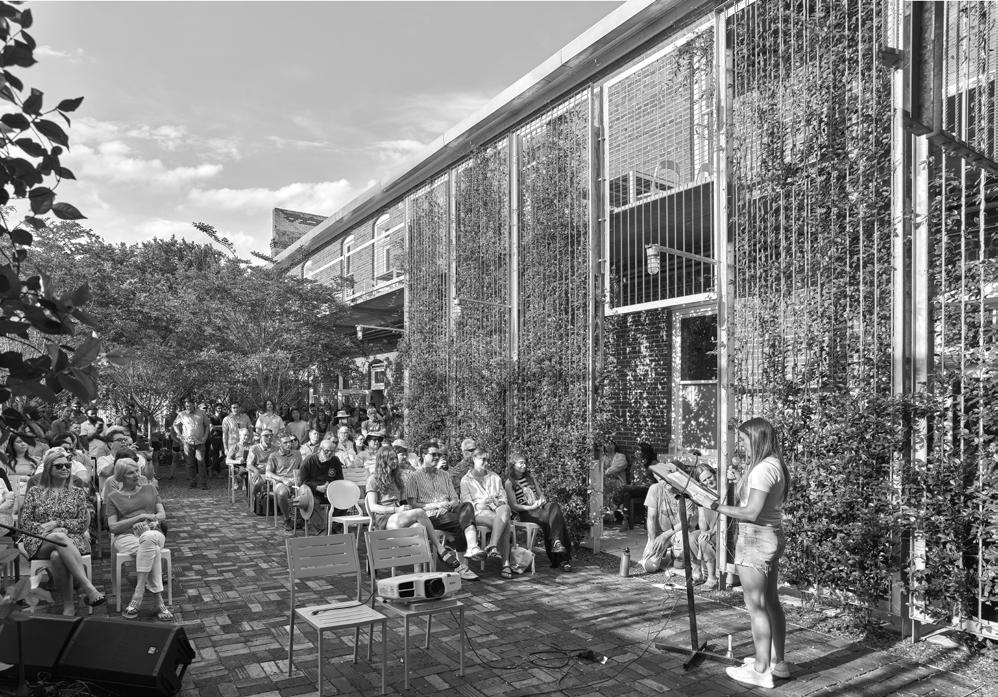
Greensboro. We returned to Morrisette for a fresh, flavorful taco spread, provided by our very own Catherine Tabb. With plates still in hand, we enjoyed the fruits of the 3rd-years’ History and Woodshop classes and were brought up to speed on the latest news from our Front Porch Initiative team. The Initiative is putting our local designs to the test from Florida to Nashville, giving us contextual field implementation data to keep refining what we do. Before trapsing off again, Eric Ball introduced the Farm and its role in Studio life and culture. He walked us through the greenhouse and crops, answering questions along the way.
We resumed our travel with a jaunt to the 3rd-year home for Rosie. A flash thunderstorm caught us, but we gathered under Rosie’s post-frame constructed roof, which shunted the downpour. Mostly dry, we listened to the team and were moved by words from Rosie herself. We jumped back in our cars to complete the tour with C.H.O.I.C.E.’s new project for emergency housing in Uniontown. Then it was back to Newbern, and we were led parade-style by the Newbern Volunteer Fire Department truck, with Bobby Scott hauling the pig behind his truck!

On Saturday morning, our 100-mile tour around west Alabama of in-progress projects and recent activities began at the respectable hour of 8:30, giving guests time to gather at Morrisette House and ready for the road. Andrew’s baby blue pick-up truck decided it wouldn’t start, but almost no time was lost as he transitioned to Mason’s Jeep to lead the caravan. Our first two stops were 5th-year projects, beginning with the most distant: Moundville Archaeological Park and the proposal for the community pavilion, followed by the two-story Patriece’s Home in
Next to the Bodark Ampitheatre, where we filled our plates with catfish, pork, and fixings. Alabama Blues Camp graduates had us tapping our feet to both traditional and contemporary tunes. Later, at the graduation ceremony, we “roasted” the students, especially those winning awards. A string of special guests graced our ampitheatre. We laughed with and were moved by our valediction speakers, Julie Eizenberg and Hank Koning, whose praise of the program warmed our hearts. Andrew paid a heartfelt tribute to a few special souls who passed. And after, we gazed up at the fireworks rising from behind the Bodark tree to splash the sky with brilliant light and bursts of color. Debbie Bond and “Radiator” Rick kept the music flowing and let us dance the night away. We send a musical shoutout to Debbie, Carroline Shines, “Radiator” Rick, and Marcus “Jukeman” Lee!
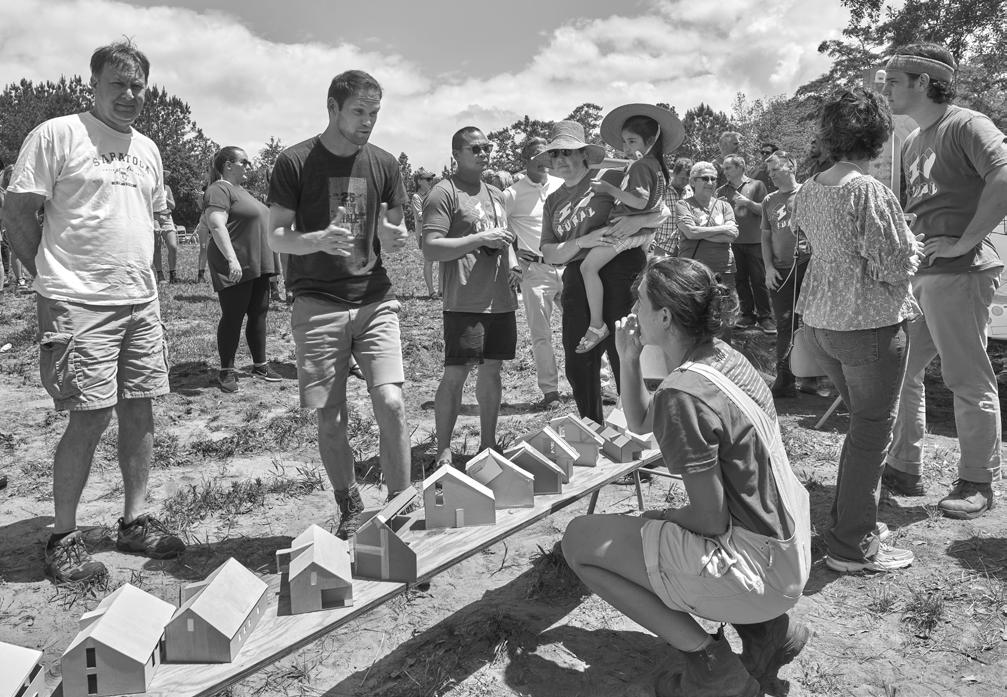
Over these two packed days, we saw students at the beginning and completion of projects—and points in between—and heard the tales and lessons of those who have gone off to do great and provocative things. Each project and story inspired us with these young folks’ initiative and agency. Oh, and don’t worry: we remembered to sprinkle everyone with Whiffle Dust!

6 THE NEWBERN TIMES, VOL. 11 PIG ROAST WEEKEND
Pig Roast joyfully spanned two days this year. We could finally convene in a more public way, so we made the most of it!
Photos by Timothy Hursley
Eight alumni, spanning the classes of 2006 to 2014, regaled us with their adventures from New York City to New Orleans, Hawaii to Birmingham.
ALUMNI LECTURES
SAMUEL MADDOX ’14
BOSTON, MA: 20K IDELLA’S HOME
Samuel Maddox is an architect and educator. He holds a Master in Design Studies in Urbanism, Landscape, and Ecology from the Graduate School of Design at Harvard as well as Bachelor of Architecture and Interior Architecture from Auburn. For the past three years, Samuel has served on the faculties of the Boston Architectural College and Wentworth Institute of Technology. When he’s not teaching, Samuel is building his practice, make/do studio, with landscape architect and fellow Auburn alum Braxton Tanner. Samuel’s primary research focus is the place of increasing importance that rural spaces hold—or should hold—within design pedagogy and practice.
STEPHEN DURHAM ’13
KAUAI, HI: NEWBERN LIBRARY
Stephen Durham is founding principal of workshop sd, a design-build studio working on projects in Hawaii, San Francisco, and Colorado. His 5th-year project at Rural Studio, the Newbern Library, sparked his love of studying materials, constructability, and craft. After Rural Studio, Stephen helped start the San Francisco office of renowned builder Dowbuilt and managed projects with designers such as Tom Kundig, Dan Pearson, James Turrell. When Stephen is not working on houses, he can be found making furniture, sewing, printmaking, or paddle boarding with his girlfriend in Kauai.
ALLY KLINNER ’12
WASHINGTON, DC: GREENSBORO BOYS & GIRLS CLUB
Ally is a 2012 graduate of Auburn University and the Rural Studio program. After completing her 5th-year project, the Greensboro Boys & Girls Club, she moved to Washington, DC, where she currently resides and practices with local architecture firm Studio Twenty Seven Architecture. The bulk of her work continues to serve nonprofit clients and aims to create dignified spaces for some of the most underserved communities in our nation’s capital. In her free time, you can typically find her curating a small art gallery, hiking in the mountains, exploring the many rural and urban pockets of the DMV area, or just planning her next adventure.
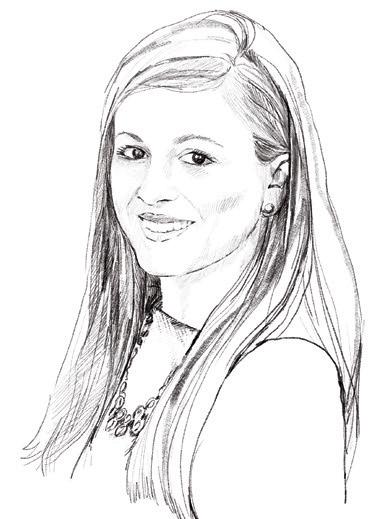
DAVID FRAZIER ’11
NEW YORK CITY, NY: NEWBERN TOWN HALL
David Frazier is a New York City–based Architectural and Interior Designer. David founded his eponymous firm in 2017 after working as a Senior Project Manager at Meyer Davis, where he led several award-winning projects of various scales around the world. David has a discerning eye for detail and believes in the importance of place-based architecture and interiors that are reflective of his clients and their lifestyles. He has designed and completed projects in New York City, the Hamptons, Connecticut, Colorado, Napa Valley, Mexico, and throughout the Southeast. He has been featured in regional and national design publications.
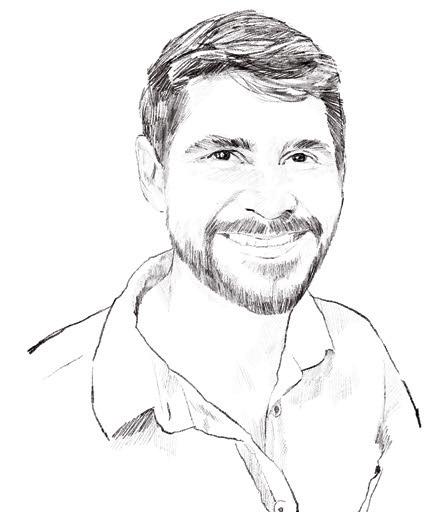

CAMERON ACHESON, ’10
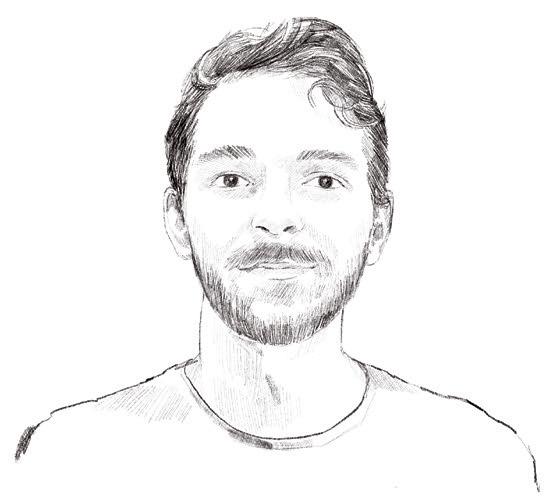
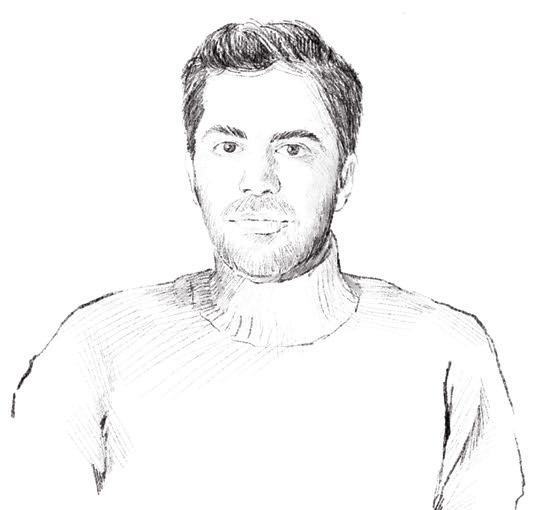
BIRMINGHAM, AL: LIONS PARK PLAYSCAPE
Cameron Acheson is an Architect at David Baker Architects. The firm’s model of practice supports her passion for housing and community-driven design, and it allows her to work both at the local and national level on mixed-use projects that provide new housing and retail opportunities in growing communities.
Prior to joining the team at DBA, Cameron worked in Chicago as a Senior Project Architect for Landon Bone Baker Architects. There, she worked with community organizations to create, stabilize, and preserve more than 1,200 units of affordable housing in emerging neighborhoods in Chicago, Detroit, and Norfolk, Virginia.
BETSY
FARRELL
GARCIA, ’08
AUBURN, AL: BRIDGE HOUSE
Betsy Farrell Garcia returned to Rural Studio after twelve years in private practice. A Registered Architect in Massachusetts, her experience ranges from master planning and design to construction and delivery of award-winning projects. Her experience in high-performance arts, higher education, and K-12 facilities informs her work envisioning and designing efficient, resilient, and equitable housing for communities that need it most. As a research professor, Garcia leverages Rural Studio’s long history of collaborating with our West Alabama neighbors to address housing needs throughout the Southeast and beyond. Her strong belief in Rural Studio’s community-driven mission motivates her in furthering its valuable research.
JOHN MARUSICH, ’07
BIRMINGHAM, AL: AKRON BOYS & GIRLS CLUB II
John is the new Lecturer & Design Build Manager for Rural Studio. Previously, he was Project Manager at WJW Architects in Chicago, IL. John’s design work, which spans a diverse range of building types, including single-family housing, hospitality, breweries, and affordable multi-family housing, is informed by a multidisciplinary career. His background in construction allows him to design thoughtfully detailed, award-winning projects with constructability in mind, while his experience as an instructor at Auburn University Rural Studio translates to a collaborative style of work that considers humanity first.
LAURA FILIPEK PATTERSON ’06
NEW ORLEANS, LA: LIONS PARK BASEBALL FIELDS
With an architecture career spanning 15 years, Laura’s diverse background includes design and project management and ranges from upscale residential, civic, and municipal projects, to zoological architecture, to her current work of building code review at the state level. She has spent her entire design career in New Orleans, LA, since leaving the Rural Studio in 2007.


In her current position working for the state of Louisiana, her various roles include reviewing plans for building code and life safety compliance, working with clients to facilitate design solutions, serving as the ADA-ABA accessibility specialist and primary plan review architect of the multi-phase $450-million-dollar Superdome renovations, and overseeing/training new team members for the Office of State Fire Marshal.

7 PIG ROAST WEEKEND
3RD-YEARS
Our 3rd-year students began with empathetic drawings that attuned students to their clients’ lives and needs, giving them tools for better design. They then began work on Rosie’s Home, a phased house being built under a post-frame roof that was erected early in construction. The 3rd-years also continued a nearly 30-year-old tradition in Dick’s History class. In Woodshop class, they created cabinets for Newbern Library, as well as wooden chairs, one of the Studio’s favorite projects.

ROSIE’S HOME
Due south of Newbern, the 3rd-year class is building a new home under a post-frame roof for Rosie and Frankie. Post-frame buildings, also known as pole barns, are common in Hale County because they are quick to put up, easy to find someone who knows how, and very useful. What’s unique is the roof goes up first so you can work in the shade and out of the rain. We partnered with the Front Porch Initiative to build Rosie and Frankie’s house under one of these roofs and will test it out for construction speed, affordability, and expandability. Our goal is to develop a housing model that can be rapidly built initially and then added onto in the future.
Rosie’s Home is a phased project. The 3rd-year students of 2021–2022 started with an in-depth site analysis and designed the post-frame roof. With help from a local installer, the roof was built in two days. Next, students developed the design program using their empathetic drawings, with Rosie’s input. They also designed the floorplan, framing details, and a strategy to allow Rosie to expand her house in the future. With the house only taking up about half the space under the roof, the front wall is designed to receive several configurations of future expansions.
The 3rd-year students of 2022–2023 are picking up the design of the wall system, including strategies for cladding, insulation, and interior surfaces. Students in the spring of 2023 will complete the porch and landscape for Rosie and Frankie. We are thrilled to work with Rosie and Frankie on this project. They are open to all our students’ questions and patient as they wait for us to finish their new home. Thank you, Rosie and Frankie!
STUDENTS FALL 2021: Laura Forrest, Peter Harpring SPRING 2022: Jon Hunt Ficken, Anna Leach, Sarah Recht, Will Robinson, Grant Schurman, Julia Whitt
FALL 2022: Alex Tate, Amanda Kaase, Ellis Smith, Eric Miles, Gabriel Brown, Jenna Webb, John Ratley, Paxtyn Whitney, Rachel Klein, Tricia Smith
INSTRUCTORS Emily McGlohn, Judith Seaman, Chelsea Elcott
LOCATION Newbern, Alabama

BLOG LINK aub.ie/rosieblog
PROJECT STATUS Estimated Spring 2023
8 THE NEWBERN TIMES, VOL. 11 3RD-YEAR STUDIO
Photo by Timothy Hursley
EMPATHETIC DRAWINGS
Inspired by William Christenberry’s photography and a desire to better understand the needs of our neighbors, the 3rd-year students at Rural Studio use drawings when they interview their clients each semester. You won’t find people in the photographs Christenberry took, only buildings and landscapes. When his work is studied, you begin to understand the lives of the people who lived and worked in places he’s immortalized. Everyday objects give you clues to what life was like. In the same spirit, the empathetic drawings, as they’re called, have a point of view and teach us something about the client.
Our students carefully measure, photograph, and observe our clients’ homes to learn more about what they like and need. On Arches paper, students hand draw detailed elevations, perspectives, and sections of our client’s existing home. The beautifully rendered drawings take weeks to complete. Through conversations with the client, students’ hunches are confirmed and become the foundation for the new house design. Careful observation, commitment of time, and thoughtful editing help the students see things about our clients that words may not describe.
HISTORY CLASS
Hudgens
INSTRUCTOR Dick
The history and watercolor class invites students to critically examine the local building designs, materials, and methods. Students explore both practical and intangible concerns that affected building in West Central Alabama in the 19th century through to today.
WOODSHOP
Long
INSTRUCTOR Steve
Another year has passed with a wide variety of accomplishments in the Woodshop! The fall group had the unique challenge of working with the Newbern Library. The students were tasked with designing and building cabinets that would be in the same style as the Library’s original birch plywood design. This opportunity gave the students the chance to work with the Library as a client and to add to the lineage of one of Rural Studio’s great projects.
The spring semester brought back an old favorite, the chair project. The students split into teams of two and replicated an existing chair design. The great challenge of this project is not the chair design but developing the process of how to build the chair with the limited tools from within the woodshop.
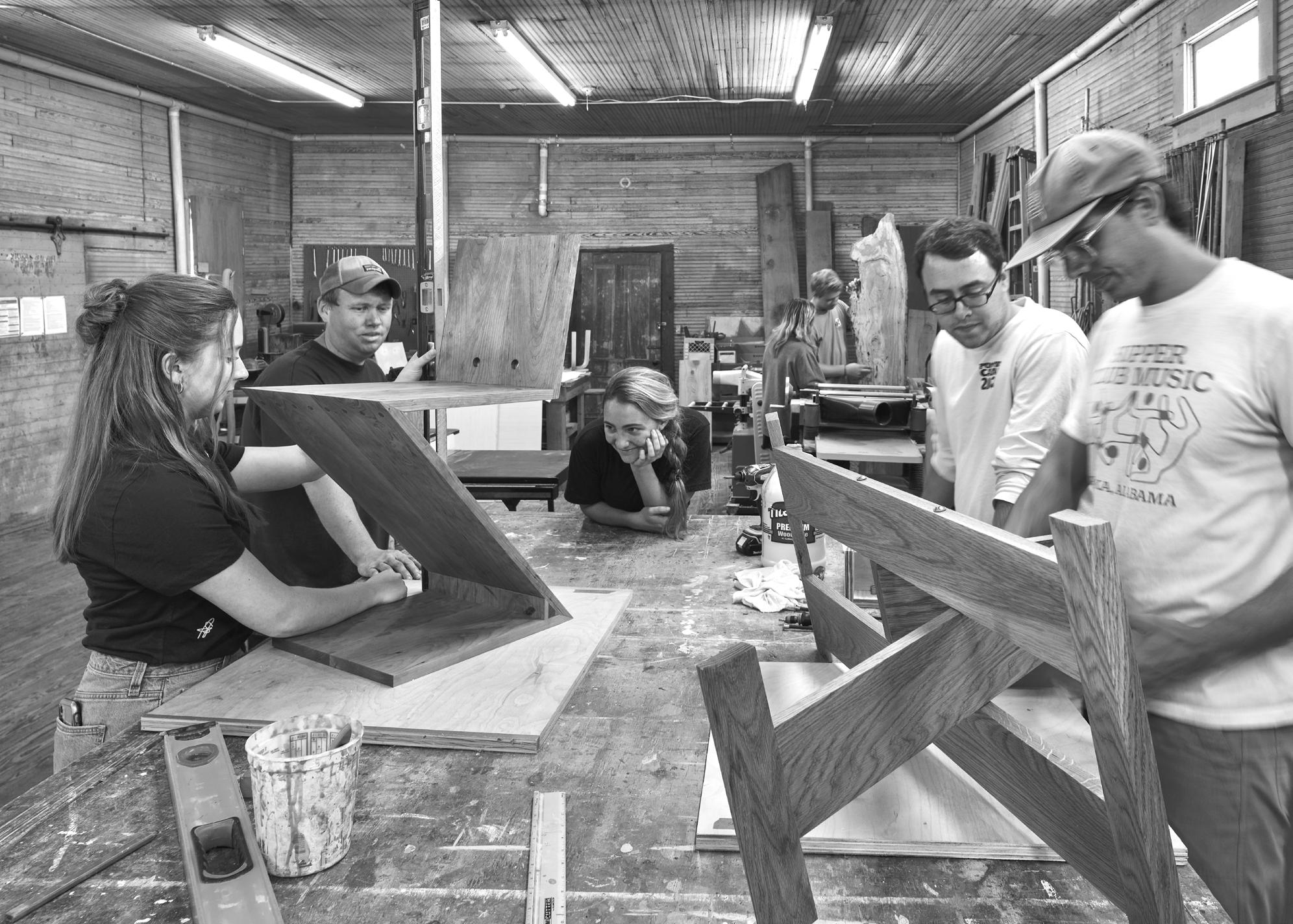
AWARD Jon
Hunt Ficken
Understanding local building practices and why buildings evolved helps students understand why and how this architecture responded to the climate, available materials, and lifestyles of the inhabitants. This in turn cultivates students’ design skills for their studio project and helps them understand the cultural significance of the design process and principles.
Weekly field trips to historic houses and farms expose students not only to the architecture but also to the context, materials, and historical conditions of the structures. We study houses of different scales
and materials, from antebellum mansions to slave quarters and 20th-century tenant houses. We also see farm buildings, a general store, and utility buildings. Students free-hand draw a plan, section, or elevation of a building on site, usually creating two drawings per building each week and also biweekly watercolor assignments that explore local materials.

AWARDS
Fall: Peter Harpring
Spring: Anna Leach (watercolor), Jon Hunt Ficken (sketchbook)
9 3RD-YEAR STUDIO
Drawing by Brenton Smith
Photo by Timothy Hursley
Rural Studio is a family, and we are always sad to see folks leave us but are excited to welcome new faces. Let’s say farewell and hello to a few very special people we love dearly.
CHANGING FACES FAREWELL
HEATHER PHILLIPS
This summer we said farewell and good luck to Heather Phillips, our Office Administrator since 2018. She has accepted a position at the University of Alabama School of Law. As Andrew Freear says, “You could always rely on Heather to get it done. She works rigorously, quietly, and efficiently. It’s been a joy to work with Heather these last few years.” Heather says her favorite part of her role at Rural Studio was event planning because she enjoys “when the planning is finished and you get to see the product of all the stress and hard work and watch everybody get to enjoy it with you. I’m going to miss our weekly staff/faculty meetings, where I’ve heard some of the worst dad jokes of my life.”
CHELSEA ELCOTT
We also say “See you soon” to Chelsea Elcott, who started as a 3rd-year in 2017 and returned as a 5th-year and leftover. After graduating from Auburn, Chelsea stayed on at Rural Studio as an Instructor until her departure in December 2021. She has joined an architecture and interiors firm in New York City that provides apartment renovations. Chelsea believes that the four-and-a-half years spent at Rural Studio were “the very best of my entire tiny little life.” She will miss the Hale County community Rural Studio comradery: “There is a rare kind of solidarity to be found at Rural Studio that you’d be hard pressed to find elsewhere.” Rural Studio will miss her adventurous and caring spirit, but we wish her the best of times in the Big Apple!

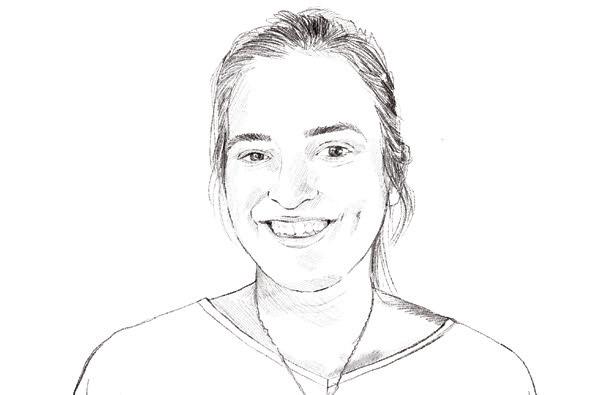
HELLO
JUDITH SEAMAN
Judith Seaman began work as a 3rd-year Instructor and Coordinator at Rural Studio in 2022 after completing her 5th-year project, the Myers’ Home. Her professional interests include multi-generational housing, alternative residential structural systems, and construction methods research. As a zealous baker, Judith bakes something sweet and delicious nearly every week for our staff and faculty meeting. Judith applied to be an Instructor to learn more about the program and herself: “I also wanted to get to know the other side of the program and explore which parts of work here I may want to continue later in practice—particularly teaching and woodshop fabrication.”


JOHN MARUSICH

John Marusich is the new Lecturer & Design Build Manager for Rural Studio. Previously, he was Project Manager at WJW Architects in Chicago, IL, where he brought his passion for perfection in the details and a strong desire to offer good design to those in need. John looks forward to sharing this passion with Rural Studio students again: “One of the things I missed the most about Rural Studio is the optimism and can-do attitude of the place.” John’s design work—which spans a diverse range of building types, including single-family housing, hospitality, breweries, and affordable multi-family housing—is informed by a multidisciplinary career, including construction.
DUDLEY LONG
Dudley Long is our new Administrative Assistant. A native of West Alabama, Long witnessed the Studio’s projects and students firsthand; this experience molded her into the person she is today: “My name is Dudley Long, I am 27 years old, and I have never not known of Auburn Rural Studio (RS). I grew up primarily in Thomaston, AL, about 20 miles south, give or take, from RS headquarters. I want to bring the change to [my hometown] and leave the generations after me with something memorable to look back on, kind of like what Rural Studio did for me.”
IN MEMORY OF
ANDREA OPPENHEIMER DEAN Rural Studio
mourns the passing of Andrea Oppenheimer Dean, a longtime supporter and friend. Dean, who immigrated to the US as a child in 1941, bravely fought cancer before she finally succumbed in September 2021. Known for her respected and prolific two-decade career as an executive director and writer for Architecture Magazine, Dean spotlighted the work of Rural Studio in 2002 with her book, Rural Studio: Samuel Mockbee and anArchitecture ofDecency. She went on to co-author two more books about the Studio: Proceed and Be Bold: Rural Studio after Samuel Mockbee (with Timothy
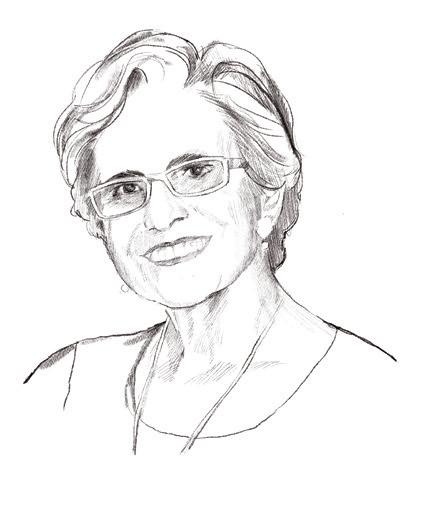

Hursley) and Rural Studio atTwenty (with Timothy Hursley, Elena Barthel, and Andrew Freear). Dean’s writing brought global recognition to Rural Studio. Andrew Freear, Director of Rural Studio, credits her work with the success of this program: “It’s fair to say that Andrea, along with architectural photographer, Timothy Hursley, brought Rural Studio and Hale County to the world. She gave Samuel Mockbee and D.K. Ruth (co-founders of Rural Studio) the platform to start challenging academia and the profession, initially with a feature in Architectural Record and then later with the three Rural Studio books.”
WE MOURN THE LOSS OF THREE OTHER RURAL STUDIO FRIENDS AND NEWBERN NEIGHBORS
Bill Walthall descended from generations of Walthalls in Newbern. He served as Rural Studio’s informal tour guide and general advocate. “Bill took true joy in seeing students do well and his heart naturally connected with the idealism, youthful enthusiasm, and spirit of kindness, care, and service embodied by the Rural Studio.”
Anne Honeycutt was the guard dog of our comunity, surveying our village from her seat on her golf cart. “Miss Anne was the arch-nemesis of our late great colleague Johnny Parker. It was one of life’s great joys to go into the Newbern Mercantile and see them bantering and jousting, all with their sly smiles.”
—Andrew Freear, Director of Rural Studio

GB Woods owned and managed Newbern Mercantile for nearly 40 years. He was another heartbeat of the town. “GB always had a smile on his face and had the kindest heart. He loved everyone and never missed a chance to help others, especially animals. His dedication to the Hale County Animal Shelter was unmatched.”
—Dr. John Dorsey,
 Director
Director
of Project Horseshoe Farm
—Lana Smelley, Rural Studio Alumna
10 THE NEWBERN TIMES, VOL. 11 FAREWELLS AND HELLOS
BILL WALTHALL ANNE HONEYCUTT GB WOODS
Q&A WITH EMEFA BUTLER
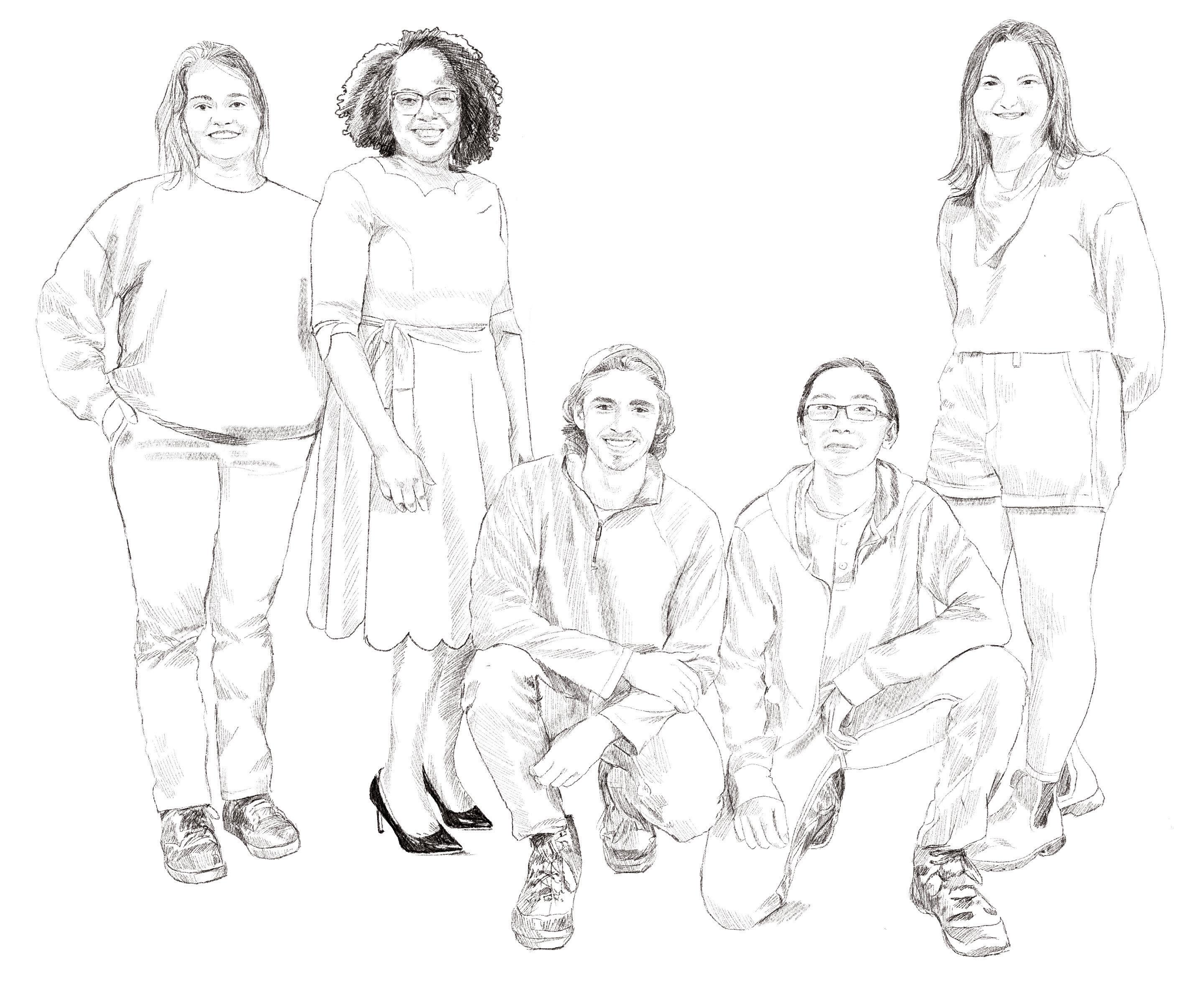
Butler was raised in Uniontown but moved to Birmingham as an adult, where she received a bachelor’s degree in finance and then worked for a financial company for 13 years. She returned to Uniontown to give back to the community that helped raise her.
TALK A LITTLE BIT ABOUT YOUR BACKGROUND AND GROWING UP IN UNIONTOWN, ALABAMA. I did grow up in Uniontown. I went to Robert C. Hatch High School. I’m a class of 2000 graduate. I was a teen parent as well. I had my son while I was in high school, so the challenge was after high school, I had to do something. I started at Alabama State University. That didn’t quite work out, so I relocated to Birmingham [and] started at UAB and then started my career in the financial industry. I went from a teller to the Director of Operations in 13 years. That was good enough to ensure that my son and I were well taken care of.
HOW DID YOU GET INVOLVED IN COMMUNITY ENGAGEMENT? When my son graduated from high school, I kind of got bored in a sense, and I just said to myself, “One day, you know, we’re going to move back home to Uniontown and help make a difference. There were already a lot of community resources in Birmingham, and, actually, that’s how C.H.O.I.C.E. was born. I was a volunteer at an after-school program in Birmingham, and there was nothing that the kids wanted or needed or an idea that the director had that didn’t go forth. And that was amazing to me— was an eye opener. So, I thought: How can I take all these resources and help the people back home? That level of support was not something that I was directly exposed to in Uniontown. However, as I labored in Birmingham, I truly began to understand the power of the village or defining what it is when they say, “It takes a village to raise a child.”
WHAT IS C.H.O.I.C.E., AND HOW AS IT FOUNDED? Even though C.H.O.I.C.E., the resource center, has only been in Uniontown a little over two years, the organization is 13 years old. I founded it in 2006; we became a 501c3 in 2009. I actually founded it while I was in still in Birmingham, so it was the avenue by which I saw to use the resources that I had to help back home. We are a resource-based organization, so we didn’t apply for funding in the first few years. We took donations, and then we absorbed those donations to do projects, even to the penny of just getting gift cards to give away.
WHAT COMMUNITY ACTIVITIES DOES C.H.O.I.C.E. PROVIDE? We have currently two staff members: a full-time case manager who serves under the Alabama Rural Coalition for the Homeless (ARCH) housing grant and a resource assistant. We maintain a computer lab that has six computers, and we have a locker of tablets with Wi-Fi hotspots. Most of those things were just donated throughout the years. We need more laptops because we have a successful technology loan program. And we have a food pantry within the resource center. We don’t have a grocery store in Uniontown, so I have to drive at least 18 miles to the grocery store. C.H.O.I.C.E. has a great partnership with the Selma-area food bank, and they provide us with two of their programs. One is the commodity program, which is non-perishable foods for our seniors over 60. And then monthly, they provide us with at least one mobile pantry. The food bank picks up from stores like Publix or Walmart. We’ve been getting a Publix truck, so you know we’re really enjoying that. They bring those goods to us, and the mobile pantry has a lot of meat on it.
TELL US ABOUT THE C.H.O.I.C.E. EMERGENCY SHELTER. The ARCH grant funders gave us our report about how much money we had spent in hotels to temporarily house homeless citizens of Uniontown for one year, and it was $100,000. With such a need for housing in rural Alabama, especially in the Black Belt, I thought why can’t y’all use these funds to actually put houses in these communities?
The idea for an emergency shelter came from just us exploring the data that we collected through the ARCH grant because a lot of the households that we were serving through the grant were families that have two or more people. So, we knew that we needed at least three bedding options, including bunk beds and a Queen-sized bed.
The design of the C.H.O.I.C.E. House is something that families will love. They will be able to transition at the C.H.O.I.C.E. House—a home, not just a hotel room. The Rural Studio students are truly engaged in being not of the Community, but in the Community.
11 LOCAL PROFILE
Emefa Butler is the founder and Executive Director of C.H.O.I.C.E., a nonprofit organization and resource center that provides educational and charitable services to the Uniontown, AL, community. C.H.O.I.C.E. is collaborating with Rural Studio to create an emergency shelter for newly homeless citizens in Uniontown.
5th-year team with Emefa Butler (second from left)
When you look at the words, opportunity and community, both of them end in U-N-I-T-Y: unity.
EMEFA BUTLER
5TH-YEARS
C.H.O.I.C.E. HOUSE
STUDENTS AC Priest, Davis Benfer, Hailey Osborne, Yi Xuan (Raymond) Teo
INSTRUCTORS Andrew Freear, Steve Long, John Marusich
LOCATION Uniontown, AL
BLOG LINK aub.ie/choicehouse
PROJECT COMPLETED Estimated Spring 2023
The C.H.O.I.C.E. House team is building a duplex home for C.H.O.I.C.E., a resource-based organization headquartered out of Uniontown, Alabama. Since 2009, Executive Director Emefa Butler and her organization have worked to “bridge the gap between availability and accessibility” in Uniontown and all of Perry County. One aspect of their work is rapid re-housing: homelessness in rural communities presents a unique set of challenges because rural areas have fewer short-term housing alternatives, such as hotels, than more densely populated areas, and they are often not located within the proximity of the local community.
The 5th-Year student team is working with C.H.O.I.C.E. to support their rapid re-housing initiatives by designing and building a duplex that includes two emergency shelter units. The duplex can accommodate two families at a time to stay for up to 30 days. Each unit has three distinct living spaces: a primary living space, a core space for the kitchen and bathroom, and a primary sleeping space. The primary living space features a day bed that can be used as a couch or as another sleeping space.
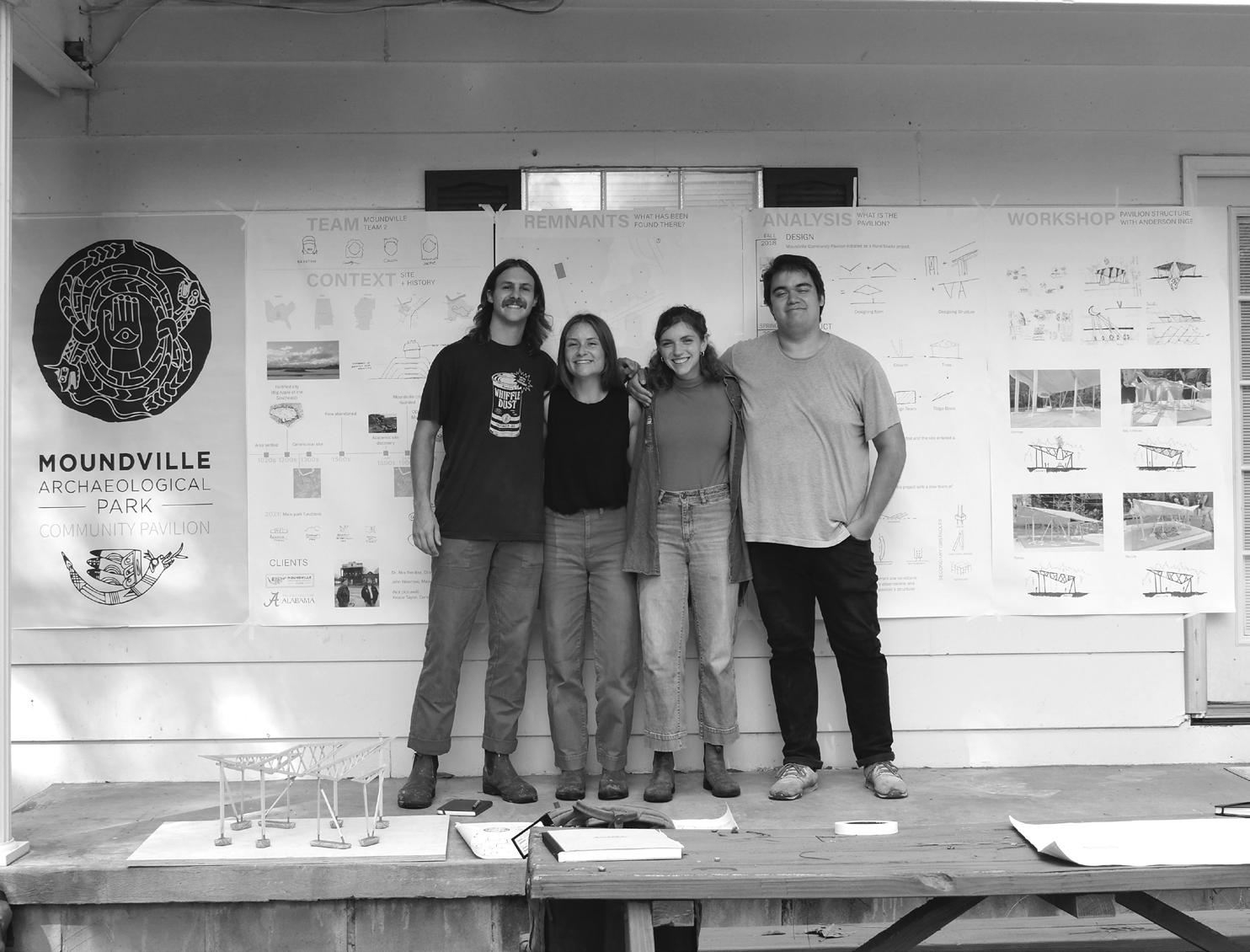
The C.H.O.I.C.E. House is the first duplex in a planned community of two on the Uniontown site. In each duplex, the two units will share a large front porch looking onto a communal garden, which also includes a communal washer/dryer storage building.
Rural Studio is gratified to be working with C.H.O.I.C.E., an organization that is providing vital resources to the citizens of Uniontown and Perry County, including re-housing services, bi-monthly food banks, educational programs, and family services. The C.H.O.I.C.E. House also builds on Rural Studio’s work with flexible housing structures that accommodate the variety of family types and sizes in rural communities.
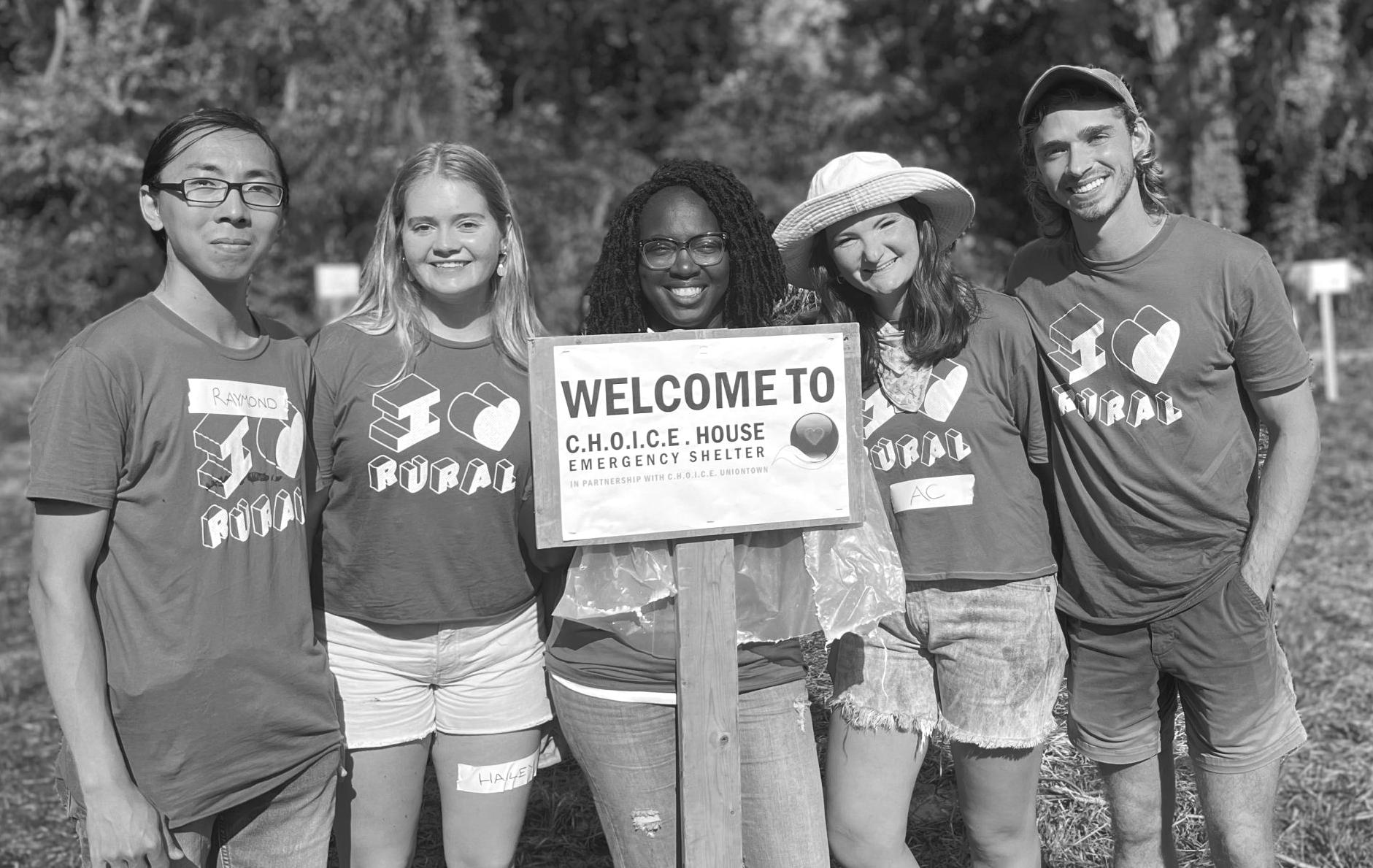
MOUNDVILLE PAVILION
STUDENTS Brenton Smith, Caitlyn Biffle, Collin Brown, Jackie Rosborough
INSTRUCTORS Andrew Freear, Steve Long
LOCATION Moundville, AL
BLOG LINK aub.ie/moundvilleblog
PROJECT COMPLETED August 2022
Moundville Archaeological Park is the historic site of one of the largest Native American settlements during the Mississippian culture. National Geographic called Moundville “The Big Apple of the 14th Century,” as it was once America’s largest city north of Mexico. Now owned and operated by The University of Alabama, the park preserves 326 acres along the Black Warrior River, where 29 mounds remain that once served as platforms for residential, civic, and cultural life and ceremonies.
The Moundville Archeological Park Community Pavilion project has been in the Studio for the last five years and was explored by two 5th-year teams. Both teams brought intellectual curiosity, hard work, and deep respect for the cultural treasure that is Moundville, and both teams had to manage circumstances beyond their control. The first team, graduates from 2019, had to halt construction due to the constraints of the COVID pandemic. The second team, who inherited the partially built project, recently learned the project was canceled. In late August, we celebrated the teams at a special dinner with Rural Studio students, staff, and faculty. A beautiful meal was made by our friend Sarah Cole of Abadir’s & Black Belt Food Project, with produce from our Rural Studio Farm.

We are immensely proud of our students’ thoughtful and careful designs, their collaboration, their intellectual curiosity, and more than anything, their poise: the first team’s composure in handling the pandemic pause and the second team’s respect and maturity in handling the close of the project. Rural Studio thanks the students for their dedication, abilities, and grace.

12 THE NEWBERN TIMES, VOL. 11 5TH-YEAR STUDIO
C.H.O.I.C.E. House progress as of December 1, 2022
Photo by Timothy Hursley
PATRIECE’S HOME
STUDENTS
Adam Davis, Daniel Burton, Laurel Holloway, Lauren Lovell
 Andrew Freear, Steve Long, John Marusich
Andrew Freear, Steve Long, John Marusich
INSTRUCTORS
LOCATION Greensboro, AL
BLOG LINK aub.ie/patriece
PROJECT COMPLETED Estimated Spring 2023
Patriece’s Home design is focused on providing more space for varying and multi-generational families in a small footprint. Often in rural areas, like Hale County, one family will live in the same home for many generations. This design offers opportunities and challenges for the home to adapt as the number of occupants and their relationships change. Although the home is designed to be adaptable, the goal for future users is to be able to modify the space without significant alterations or additions to the interior rooms. In this design, the interior of the home expands upward rather than outward, decreasing the overall cost per square footage.
The house continues Rural Studio’s work with an attic truss construction. The attic truss allows for more upperlevel sleeping space, while the addition of a door in the main living area allows either separate, distinct duplex units or combines both for one single large home. This facilitates several different living arrangements, accommodating a

Home
variety of family sizes and needs. In Patriece’s situation, she can inhabit the entire house with her family, or if she closes the main living area door, the larger unit can provide living space for her and her immediate family, while the smaller unit can house a relative or even provide a start-up space to fulfill Patriece’s dream of running her own hair salon.
13 5TH-YEAR STUDIO
Patriece’s Home progress as of December 1, 2022
Patriece’s
contributes to Rural Studio’s research into flexible housing arrangements for multi-generational rural families.
FRONT PORCH WORKS
Since 2005, Rural Studio
on the ground in Hale
Starting in 2018, through the Front Porch Initiative, Rural Studio began to “test and learn” by rolling out housing prototypes with strategic external partners. Now, as we better understand both the challenges and opportunities in addressing equitable and affordable housing access, we are expanding this work to build a pipeline of partnerships. These partnerships are focused on increasing our capacity to deliver high-performance housing to homeowners around the Southeast who need it the most but can afford it the least.
In order to build this pipeline and increase our capacity, our research and development is broadly scoped around a number of key tasks. First, we are continuing to offer technical assistance to our existing housing partners, helping them deliver our homes more quickly and efficiently in their own service
Bank, the Department of Energy, EPA, and Habitat for Humanity International (Habitat), along with many others.
Front Porch Initiative offers high-performance housing products and the technical assistance required to deliver them. But we are also working with our partners to develop innovative financial and insurance processes designed to better support the delivery of these houses. This work includes a pilot program with Fannie Mae, Regions Bank, and Habitat for Humanity that assigns value to “sweat equity,” acting as a substantive down payment on the purchase of a new home.
We are working with a coalition of partners to better understand the complex issues of heirs’ property faced by many rural landowners, with a particular focus on Black family-owned land in the Black Belt region. This coalition includes the Housing Assistance Council, Florida Housing Coalition, The Federation of Southern Cooperatives, and Louisiana Appleseed.
Working with several of our partners in “high-hazard” areas, we continue to develop construction assemblies and mitigation strategies that are designed to better respond to our changing climate, as well as to “weather the weather” that we know is coming.
areas and through their own procurement processes. Second, we continue to seek additional partnerships with housing providers working in hard-to-serve markets and in areas of significant housing need. We are currently working with 16 partners in nine states. Third, we continue to expand our Housing Network Partnerships, which include relationships with Fannie Mae, USDA, Regions
E8CDC UNAKA AVENUE CASE STUDIES IN PARTNERSHIPS
Eastern Eight Community Development Corporation (E8CDC) secured HUD Community Development Block Grant (CDBG) funding to develop an infill lot in northeastern Johnson City, Tennessee. At less than 900 square feet, the two-bedroom, one-bath house was intended to serve as a model home to gauge interest in a smaller unit. However, due to high demand for homeownership opportunities, E8CDC instead sold the house upon completion. Appalachia Service Project’s (ASP) New Build team served as the contractor on the project. ASP is a faith-based not-for-profit that has historically conducted repairs throughout the region with volunteer labor. But the declining quality of housing stock prompted creation of a New Build team that uses ASP staff and skilled contractors to build new construction
We’ve developed a synthesis between our work on the ground in Hale County and our external housing development partners in the field. Our feedback loop of research and development provides the opportunity to explore new housing typologies and prototypes that do two important things: 1) address the universal need for better housing options, and 2) respond to the particular needs of place, time, and circumstance.

The issues around access and affordability are complex. As our knowledge and know-how grow, we are expanding our resources online to include partner case studies, key learning outcomes, and publicly accessible construction documents of the homes our housing partners have constructed to date.
homes. Thanks to their familiarity with efficient building practices, the house achieved a Home Energy Rating System (HERS) score of 52, a strong score for energy efficiency. Although E8CDC secured HUD CDBG funds for the project, those funds work on a reimbursement basis, so E8CDC also secured a construction loan for the project. The permanent loan for the home was originated by Tennessee Housing Development Authority (THDA). Their New Start loan product provides a 0% interest loan for 75% of the loan. A second loan by E8CDC with approximately 2% interest covers the remaining balance. Downpayment and closing cost assistance totaling $20,500 further increases the affordability for the homeowner. On May 15, 2022, the Front Porch Initiative team celebrated the ribbon cutting with E8CDC.
14 THE NEWBERN TIMES, VOL. 11 FRONT PORCH INITIATIVE
has worked
County, cultivating both the knowledge and the know-how to develop housing prototypes. We have aimed to share these prototypes more broadly with housing providers and homeowners well outside our West Alabama community.
The E8CDC
Avenue home (a prototype from
Home) completed in May 2022.
LOCATION JOHNSON CITY, TN
We’ve developed a synthesis between our work on the ground in Hale County and our external housing development partners in the field.
Unaka
Sylvia’s
Photo by Gabe Ford, Ford Photographs
CAHFH CHIPOLA STREET
The four homes in the Chipola Street development use a land parcel long held in Chipola Area Habitat for Humanity’s (CAHFH) portfolio of properties. The site, which is formed of four adjacent narrow lots, is sloped from front to back with a cross-slope running down the street. The small footprints of the Rural Studio home prototypes respond to both challenges of the narrow lots and sloping site. The development features two one-bedroom and two two-bedroom homes. One of the two-bedroom homes, Sylvia’s House, was a new addition to the product line and was chosen specifically for its flexibility on narrow parcels.

The homes are a continuation of CAHFH’s Hurricane Michael recovery efforts. Though Michael hit in October 2018, recovery efforts in the rural inland areas of the Florida panhandle are still underway. These efforts slowed during the pandemic, during which time CAHFH lost the ability to
welcome many of their volunteer groups; they were largely reliant on outside groups coming into Marianna. However, a new partnership with the Building Construction Technology program at Chipola College enables students enrolled in the Construction Technology program to earn clockhour credits in exchange for building the CAHFH homes. This partnership aims to develop a local workforce versed in high-performance building to respond to future disasters.
CAHFH also collaborated with Regions Bank and Fannie Mae about ways to increase capacity via financing opportunities provided by Regions. The team used the Sweat Equity flexibility of Fannie Mae’s HomeReady product, which harnesses the value of the sweat equity that the homeowner and volunteers put into the project to go toward the down payment of the home. On July 21, 2022, we celebrated the completion of these four homes.
NOAHH LAFITTE REPLACEMENT HOUSING
New Orleans Area Habitat for Humanity (NOAHH) has made a major, two-year commitment to Hurricane Ida recovery in Jean Lafitte, Louisiana. Over 90% of homes in Jean Lafitte were damaged by Hurricane Ida on August 29, 2021. Unlike typical Habitat for Humanity projects, where homeowner families purchase a home and the land on which it sits, in these recovery projects, replacement homes will be built on land already owned by the families.
By excluding the cost of the land (already owned by each of the families) and by using insurance claims, grants, and philanthropy, NOAHH aims to offer monthly mortgage rates in the $500/month range. NOAHH also has secured material donations such as mini split heating and cooling systems and kitchen cabinetry.
The first several homes will use Rural Studio’s Sylvia’s two-bedroom, two-bathroom prototype. This long, narrow house is well-suited for many of the parcels in Jean Lafitte. The homes are elevated above the base flood elevation, creating a secondary social space underneath the house.

To ensure that the homes continue to be assets for the homeowners, the homes will be built to beyond-code energy (ENERGY STAR) and resilience (FORTIFIED Gold for Hurricane) standards.
FCCD & LTC CARRABELLE HOUSE
Franklin County Community Development and Land Trust Corporation (FCCD<C) in Franklin County, Florida, is creating a stock of permanently affordable housing through the development of homes in a community land trust (CLT). In the CLT model, the value of the land is separated from the value of the house; the “improvements” on the land (the house) may be purchased and sold while the CLT maintains ownership of the land. Since the sales price of the home does not include the value of the land, homebuyers have a lower—and therefore more affordable—mortgage payment coupled with a nominal ground lease payment.
FCCD<C owns several scattered site infill parcels on which they would like to build homes. The first home is located in the community of Carrabelle, Florida. This two-bedroom, two-bathroom house will serve as a model for other future CLT projects. After the first house is complete, FCCD<C intends to continue developing homes in pairs.
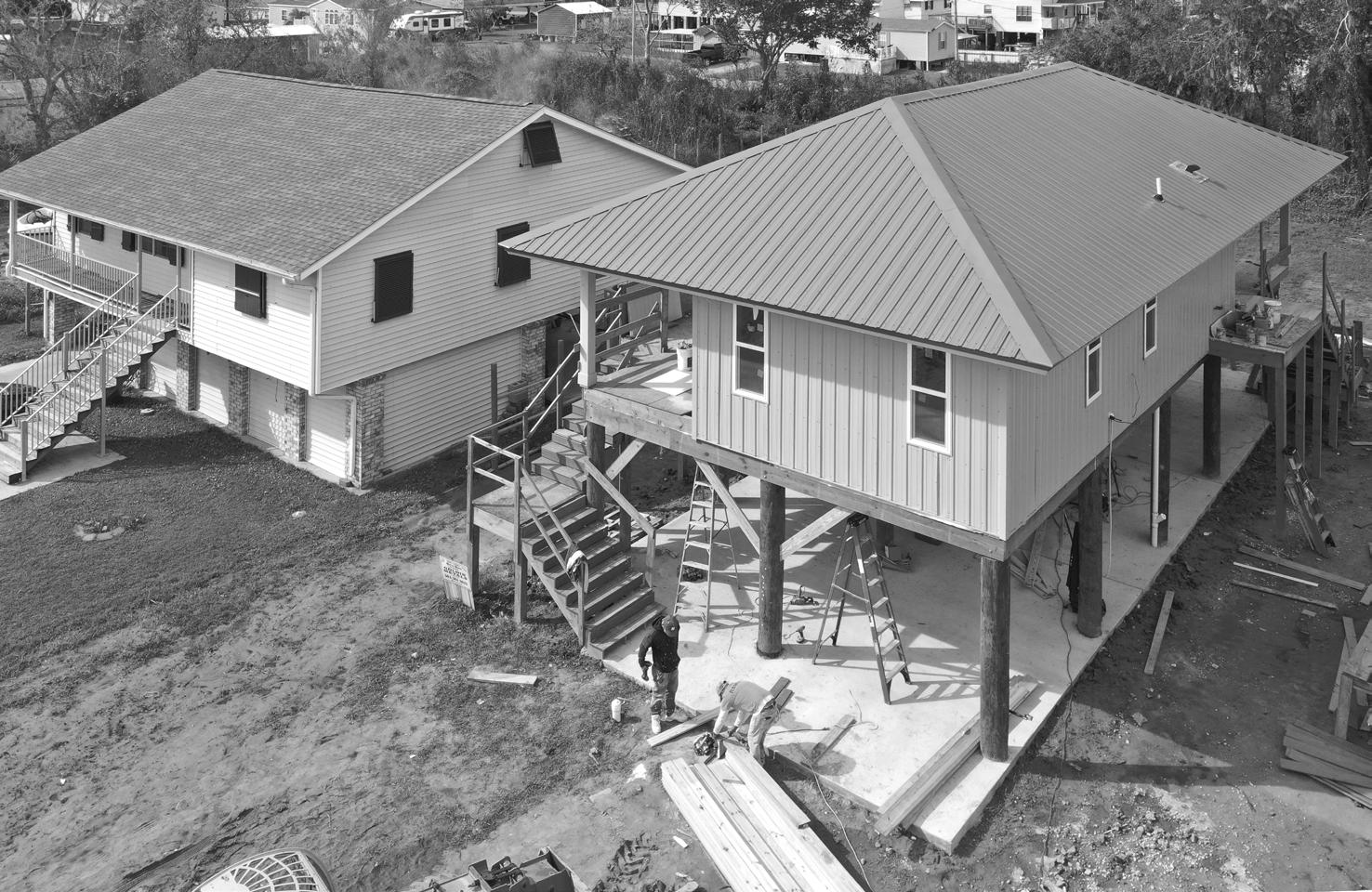
15 FRONT PORCH INITIATIVE
FCCD & LTC Carrabelle House (a prototype of Sylvia’s Home) broke ground in September 2022.
NOAHH home (a prototype from Sylvia’s Home) progress as of December 1, 2022
CAHFH homes (prototypes of Buster’s Home, Dave’s Home, Joanne’s Home, and Sylvia’s Home) were completed in July 2022.
LOCATION MARIANNA, FL
LOCATION CARRABELLE, FL
LOCATION JEAN LAFITTE, LA
RECIPE BY SARAH COLE
Sarah Cole is the owner and Head Chef of Abadir’s in Greensboro, Alabama, a specialty kitchen and catering business. Abadir’s features Egyptian cuisine, prepared in a Southern kitchen. Through her business, Sarah celebrates whole foods with fresh vegetables and simple ingredients.
Sarah also founded the Black Belt Food Project, a nonprofit dedicated to nourishing the West Alabama region through food-based education. The recipe below, Egyptian-Style Greens in Tomato Sauce, features produce grown at Rural Studio by students. The recipe is versatile enough for substitutions, such as different greens, and it pairs well with cornbread and feta.
EGYPTIANSTYLE GREENS IN TOMATO SAUCE
This recipe is a take on a traditional Egyptian dish: Spinach in Tomato Sauce (Sbankh), which we grew up eating a lot of in my half Southern–half Egyptian household. It is simple and hearty and features some delicious, nutritious veggies, a perfect dish for an Alabama fall. The red sauce in this recipe is the base for many Egyptian vegetable dishes, but to me, the spinach combination is one of the best. My recipe is a celebration of my own heritage. In addition to the spinach, I add in some Southern staples like collards, mustard greens, or turnip greens. Kale also works really well. Honestly, any green will do. It all depends on your texture and flavor preference. Just think of it as Southern greens with a little North African influence. For this recipe, I’m using the Rural Studio Farm as inspiration, so all veggies are fresh. You can absolutely use frozen spinach and greens just the same. Enjoy this dish with rice or toasty loaves of pita bread. For meat lovers, a nice roast chicken pairs well. We don’t skimp on flavor in our kitchen, so this recipe uses a lot of garlic, fresh onion, and cumin. Adjust to your liking. Just know that I always recommend being bold.
PREPARATION
1. Mince onions in a food processor (or mince finely by hand). Set aside.
2. Peel and mince garlic. Set aside separately.
3. Heat the stockpot over medium-high heat and add the oil.
4. Add onion and stir to coat in oil. Allow the onion to sit, stirring occasionally until it gets a little brown. Drop the heat to medium/medium-low, add a dash of salt, and continue cooking.
The secret to the perfect Egyptian tomato sauce is a nice brown onion. We’re talking a nice deep brown, some can even be a little black. We aren’t caramelizing the onions: we’re almost frying them.
INGREDIENTS
1 whole garlic bulb
3–4 fresh yellow onions
3 lb. fresh tomato*
1–2 cups stock or broth of your choice
4 Tbsp cumin
2 Tbsp garlic powder
5. While the onions cook, puree the tomatoes in a food processor.*
6. When the onions are brown, toss in the garlic and give it a few stirs. Cook until fragrant.

7. Add the cumin and turmeric, and stir to coat. Add a little liquid (broth or water) to scrape up all that delicious flavor that stuck to the bottom of the pot. Reduce heat to medium-low.
8. Add the tomato puree (or sauce, if using) and seasonings, and stir. Continue to cook for another 10 minutes to allow the flavors to meld.
9. Add the chopped greens (or frozen greens, if using), and continue to cook on low for 30–40 minutes until they break down and turn a nice deep green. Add liquid as needed. **
1 Tbsp turmeric salt + black pepper to taste
6–8 cups fresh collards/turnips, chopped
6 cups fresh spinach, chopped
4 cups fresh kale, chopped
Large stockpot
2 Tbsp oil
* I’m very picky about tomatoes and will absolutely not use store bought tomatoes ever. If you have access to fresh tomatoes, I highly recommend using them for the sauce. If not, substitute fresh for (1) 15 oz can diced tomatoes and (1) 28 oz can tomato sauce.
** As the veggies cook, they will release water, so add liquid as you see fit. You can always add the liquid later as the greens cook down or even at the very end; it’s up to you. I prefer a nice stew that’s not too soupy, so I add liquid toward the end of cooking.
16 THE NEWBERN TIMES, VOL. 11 RECIPE
IMPROVING OUR COMMUNITY
USDA RURAL PLACEMAKING INNOVATION CHALLENGE

We are often asked, “Where do projects come from?” The answer is both straightforward and complex. All come directly from the needs, desires, and actions of our neighbors. Living in West Alabama, Rural Studio participates regularly in community meetings, holds membership in civic organizations, and works with elected leaders and advocates. We support the efforts of our local community in developing strategic initiatives that promote more healthful and sustainable rural living through the strengthening of Place. These placemaking activities can often take years of persistent work before a supporting design and construction project is taken on by the Studio.
WASTEWATER PROJECT
Rural America’s challenges create many opportunities for partnerships, and Rural Studio is working with engineering experts from the University of Alabama, the University of South Alabama, and Auburn University to bring decentralized wastewater treatment systems to West Alabama. Because of clay soils in the Black Belt region, standard septic systems often fail and are expensive to replace. To address the problem, a multidisciplinary team will design and manage the installation of a demonstration system on Rural Studio’s campus. This team
To bolster these activities, Rural Studio has gained the sponsorship of USDA through the “Rural Placemaking Innovation Challenge.” This competitive grant from USDA allows us to strategically convene partners and identify community needs that prioritize housing, economic development, enhancement of outdoor activity space, and community-led health and wellness initiatives. Over the next two years, this grant will accelerate our efforts to engage with both local stakeholders and national subject matter experts.
consists of Dr. Kevin White, Dr. Mark Elliott, and Dr. Mark Barnett, with on-theground help from our own Emily McGlohn and Eric Ball. It will receive and treat the wastewater from Morrisette House, the Pods, and the Red Barn. By the spring of 2023, the system will be installed and running, and visitors will be welcome to see it in action. The project is funded by Columbia World Projects, the USDA, and the American Rescue Plan Act Black Belt Wastewater Improvement Plan. We hope it will serve as a model for other rural communities to follow.
RURAL STUDIO + BLACK BELT FOOD PROJECT
West Alabama has a new nonprofit working in Greensboro: Black Belt Food Project (BBFP). Started by our friend Sarah Cole of Abadir’s, BBFP aims to build a stronger, more inclusive environment for children and adults through food-based educational opportunities. Eric Ball, Rural Studio’s Farm Manager, joined Sarah’s newly formed board, which includes Dr. John Dorsey, Director of Project Horseshoe Farm; Stephanie Nixon from Hale County Library and founder of Sacred Space, Inc.; and Amanda Storey, Executive Director of Jones Valley Teaching Farm. Rural Studio is building a relationship with BBFP to offer the Farm as an educational resource with the broader West Alabama community. Notably, in October,
Rural Studio, Newbern Library, and the BBFP hosted a food event called Food for Thought: A Journey through Food, History, Culture, & Taste. Sarah describes the program as a “two-day event honoring the history of Alabama cuisine and our current food culture in the rural South.”
Additionally, Rural Studio Farm is now producing more food than we can use, so we are sharing extra produce with the BBFP to be distributed to the public at pick-up points, like in Project Horseshoe Farm’s new “store” space at their headquarters in downtown Greensboro. It’s a “take what you need, give what you can” market stand.
LIONS PARK: 17 YEARS AND COUNTING
Lions Park is a 40-acre park in the city of Greensboro. In 2005, the first Rural Studio student team worked with the community to develop an overall strategic plan and vision for the Park and completed new and improved baseball fields.
Over the next decade, student teams completed ten more projects, including a playground, skate park, and walking trails. Greensboro’s Mayor, Johnnie B. Washington, credits Rural Studio for much of Lions Park’s success: “It was a Godsend for them to get involved and push the process along—to get all the groups involved and to get a Board established. We now have a plan to move forward.”
Susie Harris, Chair of the Parks & Recreation Board, praises the Park because it offers “a lot of different things that bring different people from the community for different purposes. It serves as an intersection, a hub, where everybody crosses over.” She attributes much of this success to Rural Studio’s help. For example, during a recent Neckdown Week, the Studio helped re-launch the baseball Leagues: “Rural Studio has been amazing friends to the Greensboro community. They had a group out there to replace all the deteriorating wood on the bleachers. They cleaned the bathrooms. They put in water lines. Everything that had to be done, they had a hand in, and all we had to do was call!”
Until recently, the Park was jointly owned by three entities: Hale County, the City of Greensboro, and the
Greensboro Lions Club. After many years of dedication and planning, the Park’s complete management and ownership was handed over to the City of Greensboro this year. With the help and contacts of Rural Studio, the City established a Parks & Recreation Board to manage and maintain all city parks, including Lions Park. Harris welcomes this transition because it creates one central governing body: “Maintenance, future projects,
requests for activities, use of facilities—everything will now streamline and be communicated through our Board.”
The transition is still in progress. However, in the future, the Mayor is confident that the Board will become self-sustaining through grants and other fundraising.
17 OTHER INITIATIVES & PAST PROJECT PROFILE
With our community partners, we continue to look for ways to improve the quality of life in Hale County through student projects and program initiatives.
Lions Park in summer of 2022.
Photo by Timothy Hursley
ERIC BALL
Eric Ball, our Farm developer and manager, makes his family home in Newbern within walking distance of Morrisette Campus. Eric does far more than toil in the soil: for ten years, he has been learning, adapting, and applying a range of sustainable farming practices to find solutions to the often-overlooked food needs of rural communities.

WHAT IS YOUR EDUCATIONAL AND PROFESSIONAL BACKGROUND, AND HOW DID IT LEAD YOU TO AN INTEREST IN FARMING?
I studied continental philosophy and biology—especially evolution and ecology—when I was in undergrad at the University of Oregon, and I have a bachelor’s in both. Each of these is a lens through which I could better understand the world: biology, and science in general, to examine and understand the natural world, and philosophy to probe at deeper questions of human experience like existence, meaning, and ethics.
I see farming as being an intersection of both of these: it is the manipulation of the natural world toward human ends. My training as a scientist has been essential in thinking about growing crops, especially in the broader context of an ecosystem, how the soil microbiota, weeds, pollinators, and insect pests all interact together. It also prepared me for how to use experimentation to refine my practices and methods and to fine-tune which crops to grow when and under which conditions. But all of this is informed by big-picture philosophical questions about why we farm the way we do. Questions like, How should we relate to the land? Should we see it as a precious resource to be stewarded with gratitude and respect, or should we view it simply as a resource to be exploited and extracted from?
I’m also currently working on a master’s through Auburn’s Master of Science in Crop, Soil & Environmental Sciences program.
WHAT ARE YOUR THOUGHTS ABOUT FOOD AND HEALTH, ESPECIALLY IN RURAL COMMUNITIES?
Food and health are directly linked. Sadly, even though rural America is where a lot of our food is grown, access to nutritious food is one other way in which rural communities are trailing urban ones. Rates of food insecurity are higher in rural areas as compared to urban ones. Food security means not just access to raw calories but access to nutrient-dense foods like fruits and vegetables.
Research has shown that an increase in local food investments is directly related to better health outcomes, and Alabama, compared to other states, rates very low in both categories. Systemically, we need more robust, healthy, and just local food systems to improve people’s lives, especially in rural places like this one.
DESCRIBE THE WAYS THAT RURAL STUDIO FARM CONTRIBUTES TO THE LARGER HALE COUNTY COMMUNITY.
The Farm operation is right in our front yard next to the highway. I have met a lot of people in the community who are surprised that we can grow many of the crops that we do, so I think the Farm opens people’s eyes to the possibilities of how we can work with the land.
More importantly, however, we are beginning to look outward to ways we can directly connect with the community. The Farm has been so successful that we are producing more food than we can use, so this year I am piloting a CSA program with students and staff here. We also have started sharing our produce with the new nonprofit Black Belt Food Project that helps distribute this free food to pick-up points in Greensboro.
WHAT ARE YOUR TEACHING DUTIES AT RURAL STUDIO? WHAT DO YOU ENJOY THE MOST ABOUT TEACHING?
My role as a teacher is mostly informal, yet it is a central role for Rural Studio because I am the only person who works with each and every student who passes through here. On average, the students work about two hours every two weeks on the Farm. So students learn more about growing and gain confidence in cultivating their own plants by spending time on the Farm. But I try to connect specific farm tasks with larger issues having to do with America’s food system and culture of industrial farming. I give a series of mini-lectures during lunches that more directly confront some of these issues, as well as topics like food literacy and trying to give students the information to make more informed decisions about what kinds of food they are buying and the impact these decisions have.
WHY DID YOU CHOOSE ORGANIC FARMING? WHAT CHALLENGES DOES IT BRING?
In the face of unchecked consumption, climate change, rapid population growth, and the destruction of prime arable farmland for urban expansion, I think it would be irresponsible to not question our impact on the planet. The choice to grow food using organic practices, such as not using synthetic fertilizers or chemical pesticides, has very real consequences for the long-term health of the soil, our waterways, and wildlife—especially honeybees and other pollinators—as well as human health. Choosing to grow the way we do is also taking a position on our relationship to the land and a position against the conventional way of growing food in the US, which is predominately the industrial, large-scale production of a single crop (monoculture).
Of course, there are practical challenges, too, like the abundance of insect pests and weeds, and we can’t just spray away these difficulties. But there are solutions that we use successfully—and without the need to spend so much money on chemicals. For example, just planting many crops together (polyculture) and devoting a small portion of the Farm to aromatic herbs and flowers or trap crops eliminates a lot of the insect pressure. Reliance on chemicals also stifles innovation, discouraging farmers from seeking creative solutions.
WHAT WERE THE FIRST SUCCESSFUL CROPS AT THE FARM?
I had to fail pretty hard for a few years in order to learn how to grow so many different things, let alone to grow them well. Some early successes for cool-season crops were lettuces, greens, and carrots. Many of the warm-season successes were crops often thought of as Southern staples like sweet potatoes, okra, and black-eyed peas. Sweet potatoes were probably my biggest early success. We harvested about 400 pounds all at once with a dozen 3rd-years. It was like a treasure hunt. Seeing so much food suddenly unearthed from out of the ground by a group of excited students was a really gratifying moment.
WHAT NEW CROPS DO YOU PLAN TO PLANT IN THE NEXT COUPLE OF YEARS? IN GENERAL, WHAT FUTURE PLANS DO YOU HAVE FOR THE FARM?
At this point I’ve grown or tried to grow over 50 different fruits and vegetables. I would still like to grow Jerusalem artichokes and lemon grass, though. Most of the new things I anticipate coming out of the Farm in the coming years are from fruit trees and berry bushes that take several years to reach maturity and begin to bear. I plant a few new fruit trees each year. So far, we have apples, pomegranates, Asian pears, Japanese persimmons, mayhaw, crab apples, elderberries, kiwiberries, blueberries, figs, and citrus.
WHAT IS YOUR FAVORITE FRUIT OR VEGETABLE, AND WHY?
My favorite to grow is probably okra. It’s resilient, fast-growing, yields continuously for a long time, and beautiful. My favorite to eat is alliums, particularly onions. They can be prepared so many different ways, and I include them in nearly all the foods I make.
WHAT’S YOUR FAVORITE FARMING TOOL? WHY?
A Japanese soil knife called a horihori, which has a wide blade that is slightly concave, making it good for digging. It’s an extremely versatile, durable, and multi-functional tool.
WHAT ADVICE WOULD YOU GIVE TO SOMEONE WHO WANTS TO GROW A SMALL ORGANIC CROP IN THEIR BACKYARD?
Mostly I would tell people that it is absolutely achievable and that you can grow a lot in a small amount of space. You only need about 200 square feet per person to have intermediate yields. It’s best to start small with modest goals and build incrementally. That way you aren’t overwhelmed or discouraged. It’s also important to plan what you want to grow because there is usually only a narrow window of time in which to grow it, and if you miss that window, you have to wait a year. Cultivating the land takes some planning too. If it’s a new plot, I would prepare the land or build out raised beds in the fall, let any organic matter break down over the winter, and then plant in the spring. The great thing about growing organically is that you can utilize a lot of inputs that are essentially waste products in your community. Given enough time to break down, things like grass clippings and dead leaves can provide a lot of organic material.
TELL US SOMETHING MOST PEOPLE DON’T KNOW ABOUT YOU.
I have albinism, which many people humorously assume is merely a condition of being extremely pale. I cannot tan in the sun, only burn horribly. As a result, I dress heavily in the summer months. Being a farmer in our Southern summers is not ideal for me, but I love what I do. Not only does albinism change my appearance, but it has altered the anatomy of my eyes and given me high photosensitivity and low vision, such that I cannot, for example, drive a car. Although albinism undermines my sense of independence, it opens opportunities as well. I spend a lot of time walking through Newbern—a town that can be driven through in about 30 seconds—and being on foot has allowed me to know Newbern in a way that most people do not. I watch the stars and the seasons and the growing things. I get to walk to work with my kids and visit some of our favorite places in town on foot.
WHAT DO YOU LIKE ABOUT LIVING IN HALE COUNTY?
I’ve never lived in a rural place before I moved to Newbern. I enjoy the open spaces, the relaxed air of solitude, the profusion of birdsong, and a night sky awash with stars and other celestial activity.
18 THE NEWBERN TIMES, VOL. 11 STAFF PROFILE
The Farm opens people’s eyes to the possibilities of how we can work with the land. —ERIC BALL
He nourishes our community with deep insight into land ethics, sustainable production, and rural living.
FARM HARVEST

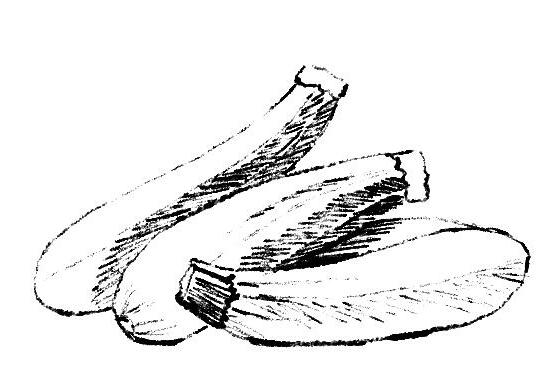








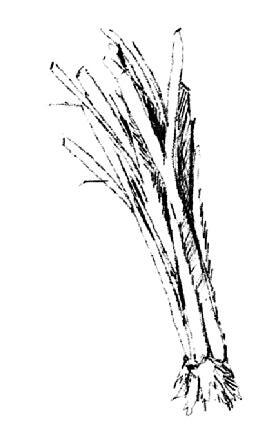

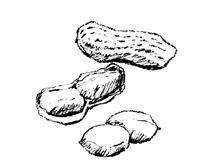



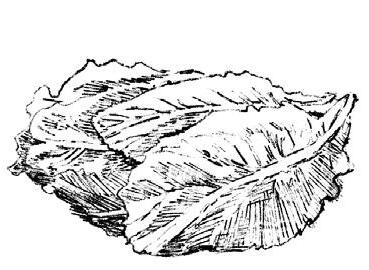
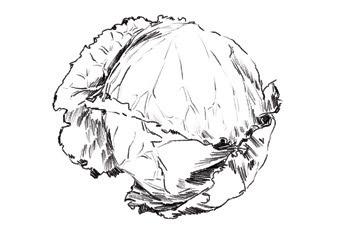








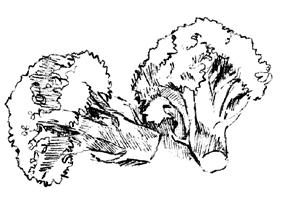

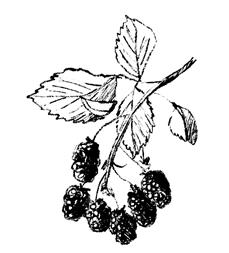






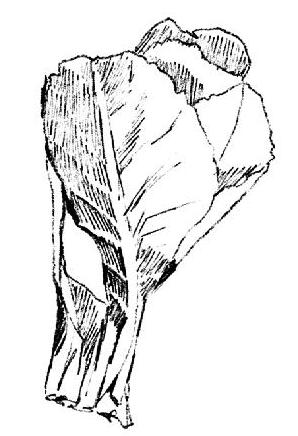


Rural Studio Farm continues to grow and develop each year. This past year, we grew more than 6,900 pounds of fresh organic produce—our biggest annual yield yet. In fact, we are growing so much food that we are producing more than we are able to use. But our success and abundance has given us an opportunity to engage more with our community.
In order to use our extra food, we began an internal pilot program for our own community supported agriculture (CSA) with plans to extend it to the broader community next year. We have also been donating extra produce to local organizations, like Project Horseshoe Farm and the Black Belt Food Project. The CSA and food donations have also allowed us to grow a wider diversity of crops like Napa cabbage, kohlrabi, fennel, and shallots.
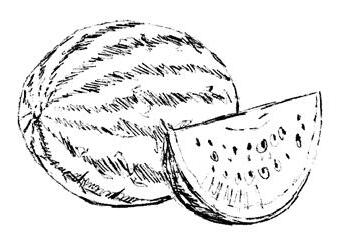



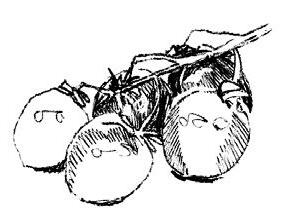
In March, we organized and hosted a small local food and sustainable agriculture summit, with help from our friends Johanna Gilligan and Brad Hart. It was such a great event that we plan to make it an annual occasion. Finally, we have begun to work closely with the Black Belt Food Project to use Rural Studio Farm and our knowledge to develop and advance food education programming.

19 CANTALOUPES noir de carmes, grislet 103lb. COLLARD GREENS champion 132.6lb. HAKUREI TURNIPS hakurei 40.3lb. SWEET POTATOES mahon’s yam 374.8lb. RURAL STUDIO FARM
6,918lb. ( JULY 2021– JULY 2022) ARUGULA astro 20.6lb. BASIL prospera, sweet genovese 16.2lb. BEETS red ace 154.4lb. BELL PEPPERS eros, cupid, carolina wonder 159.6lb. CARROTS cosmic purple, chantenay red core, hercules, yellow moon, rubypak 299.6lb. BLACKBERRIES kiowa 42.6lb. BRASSICA GREENS mix 2.8lb. BROCCOLI imperial 63.3lb. BUTTERNUT SQUASH burpee butterbush 77.3lb. CELERY tango 103.1lb. CHERRY TOMATOES sun gold, matt’s wild cherry, indigo cherry drops, white cherry, supersweet, yellow mini 249.4lb. CUCUMBERS corinto 121.7lb. EGGPLANT fairytale, orient express 383.2lb. 79.8lb. HERBS dill, cilantro, chives, oregano, parsley, mint, thyme 13.4lb. JALAPENOS jedi 27.3lb. KALE red russian, dinosaur 72lb. POTATOES yukon gold, red-skinned 267.8lb. CABBAGES january king 41.1lb. MUSTARD GREENS amara, red giant 297.5lb. OKRA evertender 88.9lb. granex RADISHES crunchy king, bacchus, pink beauty 183.3lb. ASPARAGUS jersey knight 18.3lb. virginia jumbo SWISS CHARD rainbow mix 165.5lb. SCALLIONS evergreen white 14.9lb. SPINACH auroch, hammerhead, seaside 40.5lb. CHINESE CABBAGES rubicon, minuet 105.1lb. SOUTHERN PEAS pinkeye purple hull 248.8lb. KOHLRABIES terek 69.1lb. SUMMER SQUASH early prolific straightneck 143.6lb. TOMATOES mountain merit, BHN 1021, pink wonder, cauralina 191.9lb. TURNIPS purple top white globe 639.2lb. SWEET CORN xtra-tender, american dream, vision 264.2lb. WATERMELONS crimson sweet, wilson sweet, orangeglo 257.8lb. FENNEL preludio 47.9lb. ZUCCHINIS dunja 202.5lb. ROMANESCO CAULIFLOWER puntoverde 8.4lb.
PRODUCTION TOTAL
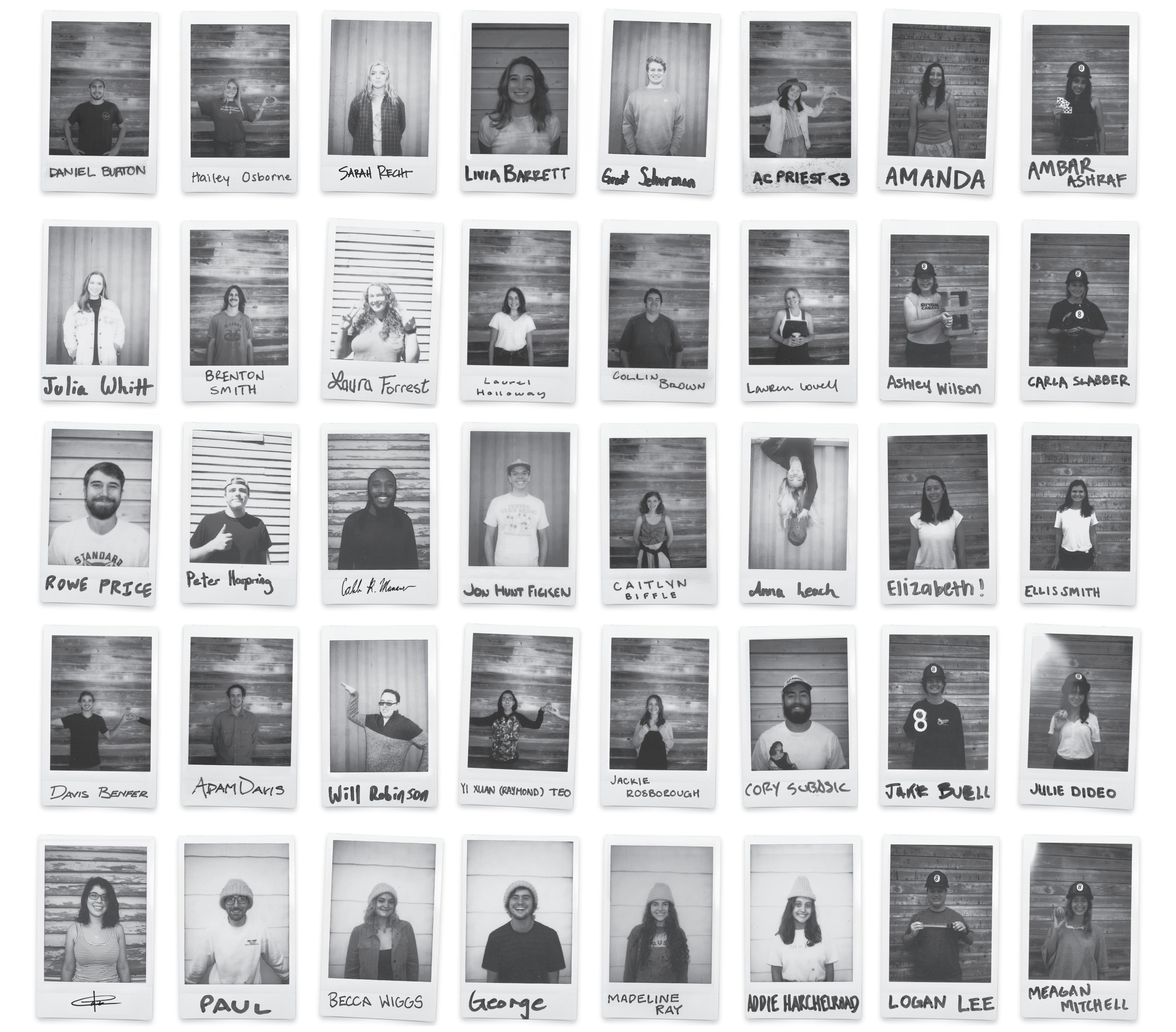
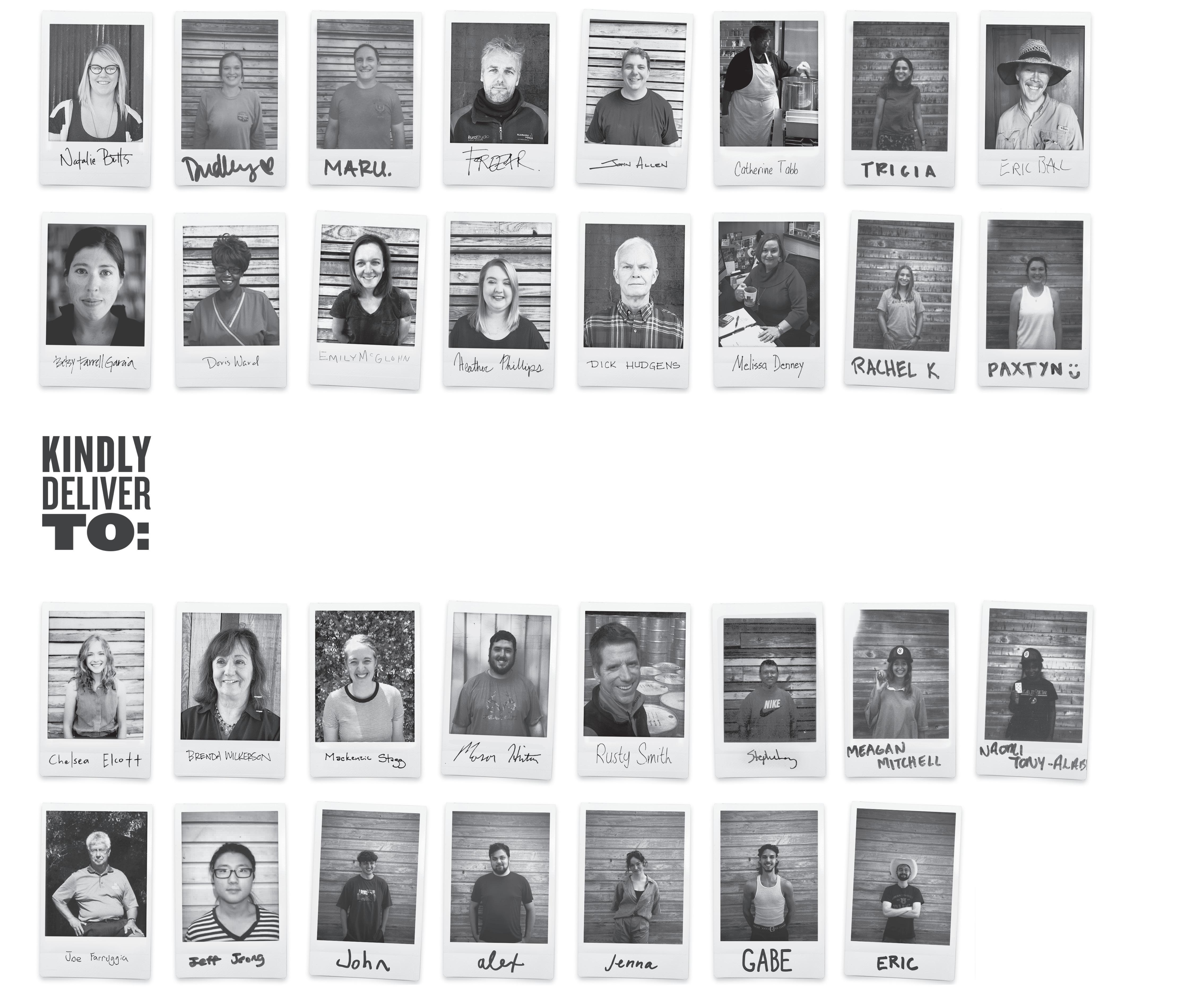
Auburn University Rural Studio PO Box 278 Newbern, AL 36765 ® Auburn University is an equal opportunity educational institution/employer.





































 Director
Director





 Andrew Freear, Steve Long, John Marusich
Andrew Freear, Steve Long, John Marusich





















































